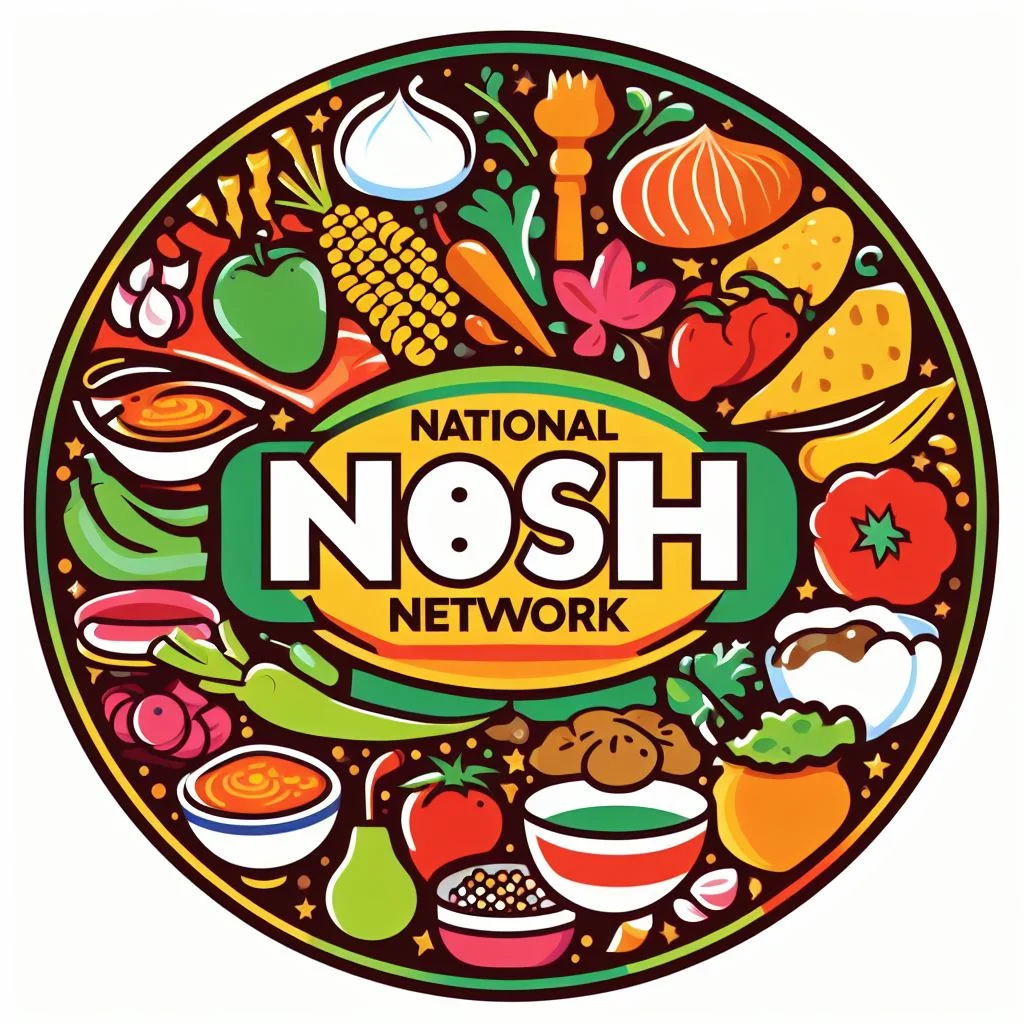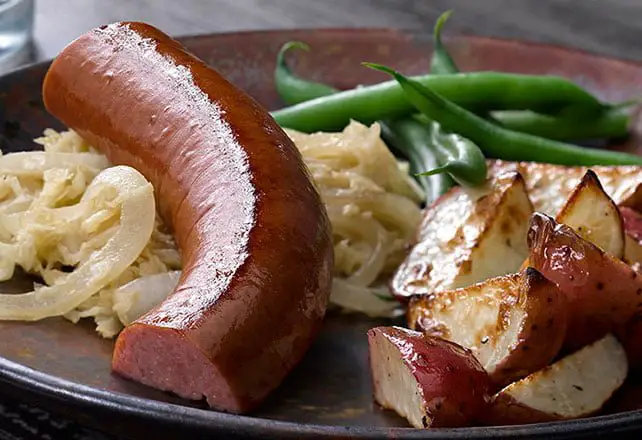Take Me to the Recipes
Forget the lederhosen and pretzel clichés – German cuisine is a multifaceted symphony of flavors, deeply rooted in history, geography, and climate. Imagine hearty stews simmering in the crisp mountain air of Bavaria, fresh seafood plucked straight from the North Sea, and vibrant vineyards basking in the sunshine of the Rhine Valley.
Each bite tells a story, transporting you through time and across landscapes, offering a glimpse into the rich tapestry of German culture.
But what truly defines this diverse culinary landscape? Buckle up, food adventurers, as we embark on a delicious journey to explore the soul of German cuisine. We’ll delve into the historical influences that shaped iconic dishes like sauerkraut and sausages, discover how geography fosters regional specialties like fish brötchen and Käsespätzle, and understand how climate dictates the seasonal bounty that graces German tables.
So, ditch the stereotypes and prepare to be surprised. From hearty classics to modern innovations, Germany’s cuisine promises a delightful adventure for every palate. Let’s raise a glass (of local beer, of course!
Take Me to the Recipes
Key Takeaways:
- German cuisine boasts a rich culinary heritage with unique flavors and traditions.
- Traditional German food includes hearty dishes like sausages and stews, as well as delicate pastries and refreshing beers.
- German cooking is diverse and varies between regions, showcasing the breadth of German gastronomy.
- Germany is known for its culinary diversity, with each region having its own unique specialties.
- German food plays a central role in the country’s culture and social gatherings.
Where is Germany?

Germany is a country located in the heart of Western Europe. It is bordered by Denmark, Poland, Czechia, Austria, Switzerland, France, Luxembourg, Belgium, Netherlands, the North Sea, and the Baltic Sea
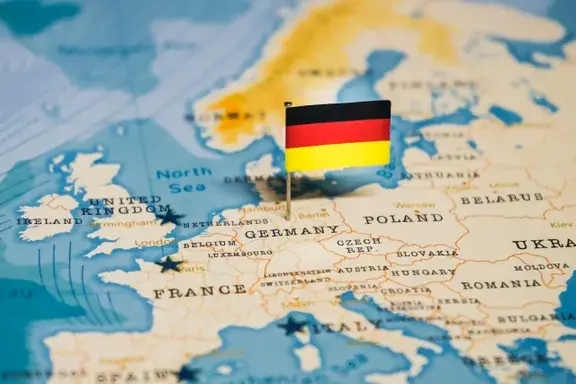
Index of the Contents
- Take Me to the Recipes
- More articles
- 10 Interesting Facts about Germany
- How the German Climate and Geography has Influenced the Cuisine
- Germany’s History and the Effect It Has Had on the Cuisine
- Understanding the Essence of German Cuisine
- German Culinary Traditions
- Exploring Germany’s Ingredients: The Flavors of German Cuisine
- Germany’s National Food
- Regional Specialties and German Cuisine Diversity
- Traditional Examples of German Food
- Exploring German Street Food
- The Most Popular German Recipes
- How Healthy is German Food
- German Cuisine Recipes to Try at Home
- Conclusion
- FAQ’s
You may also be interested in the Following Articles
- North and South American Cuisine – A Culinary Expedition
- European Cuisine: Savor the Continent’s Best Culinary Secrets!
- African Cuisine: Discover the Bold Flavors & Global Charm!
- Asian Cuisine Unlock its Secrets – Taste, Health & Global Influence!
- Oceania Cooking: A Culinary Journey Through the Pacific
- Australian Cuisine – A Delightful Taste Adventure
Savor iconic German Food Recipes – Click on each tantalizing picture to open up the Recipe.
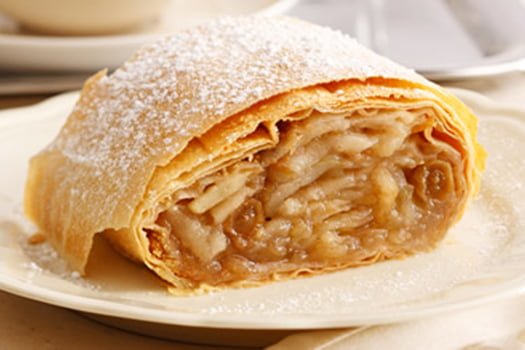
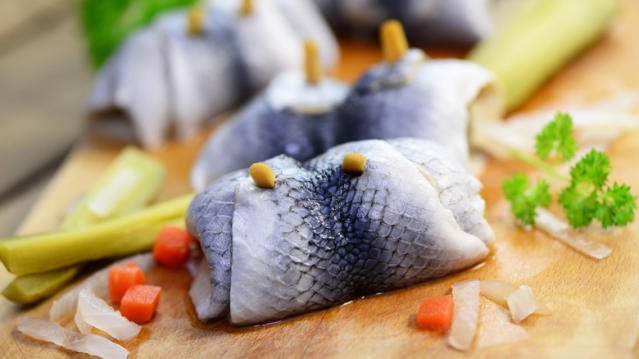
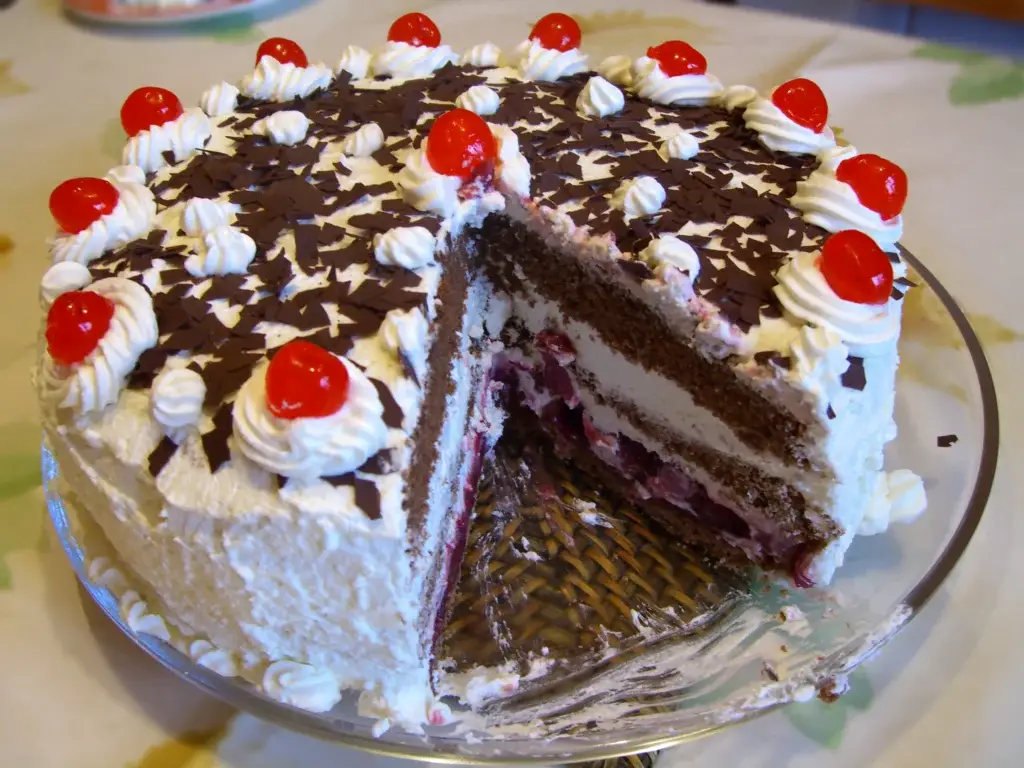
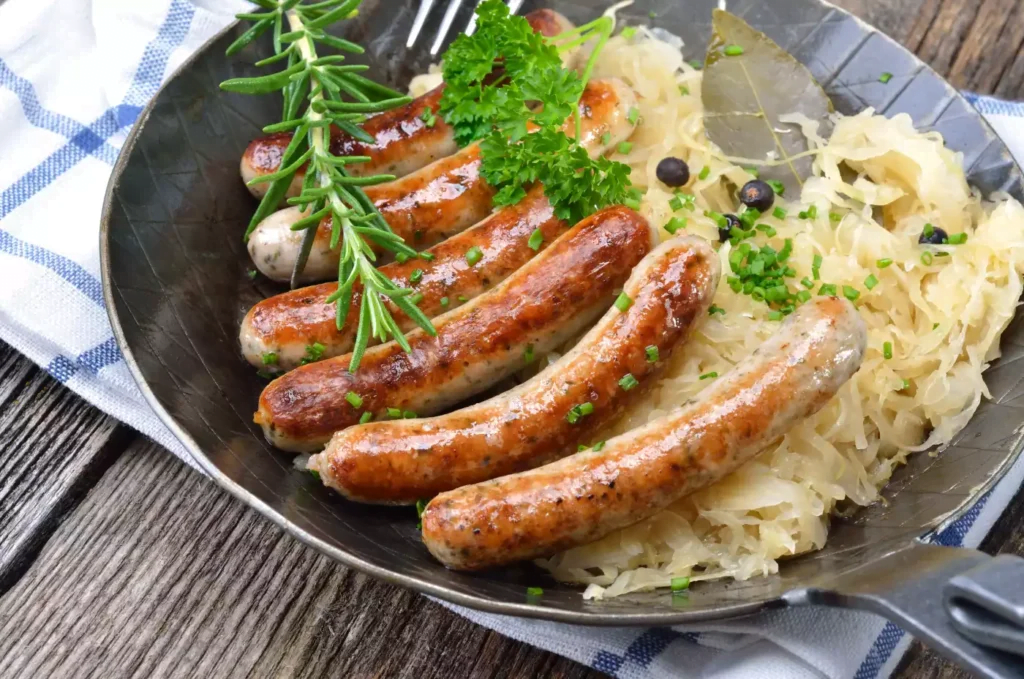
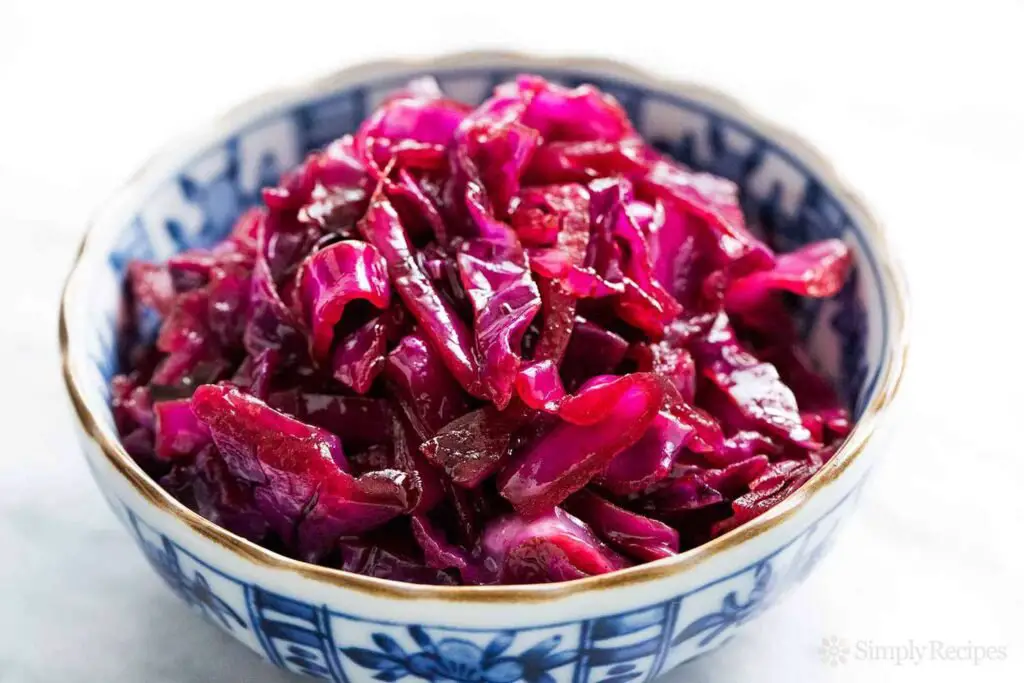
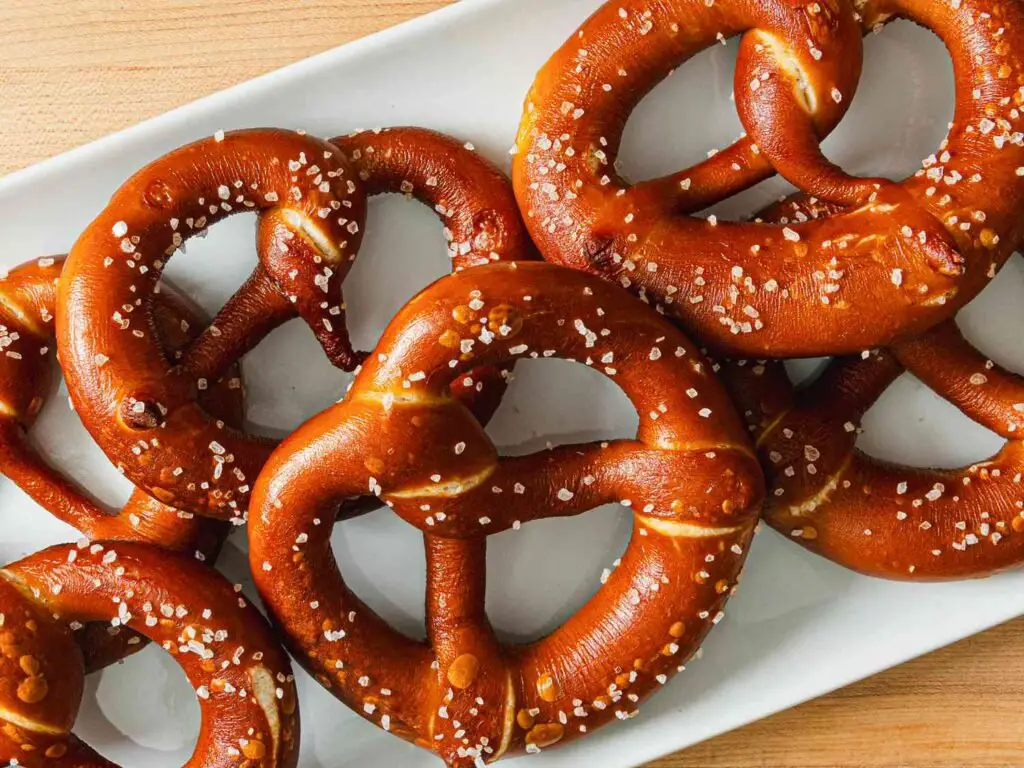
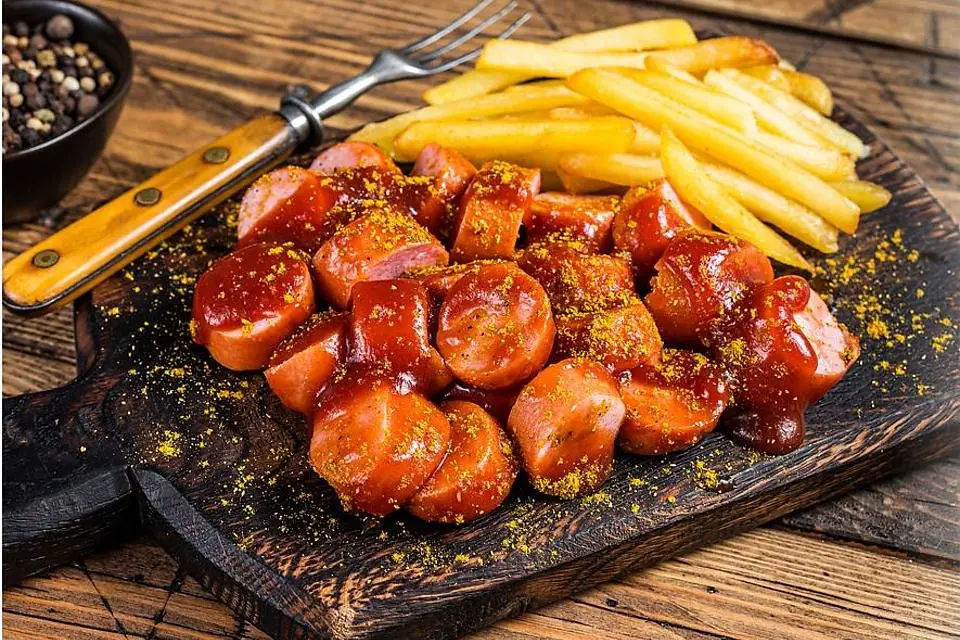
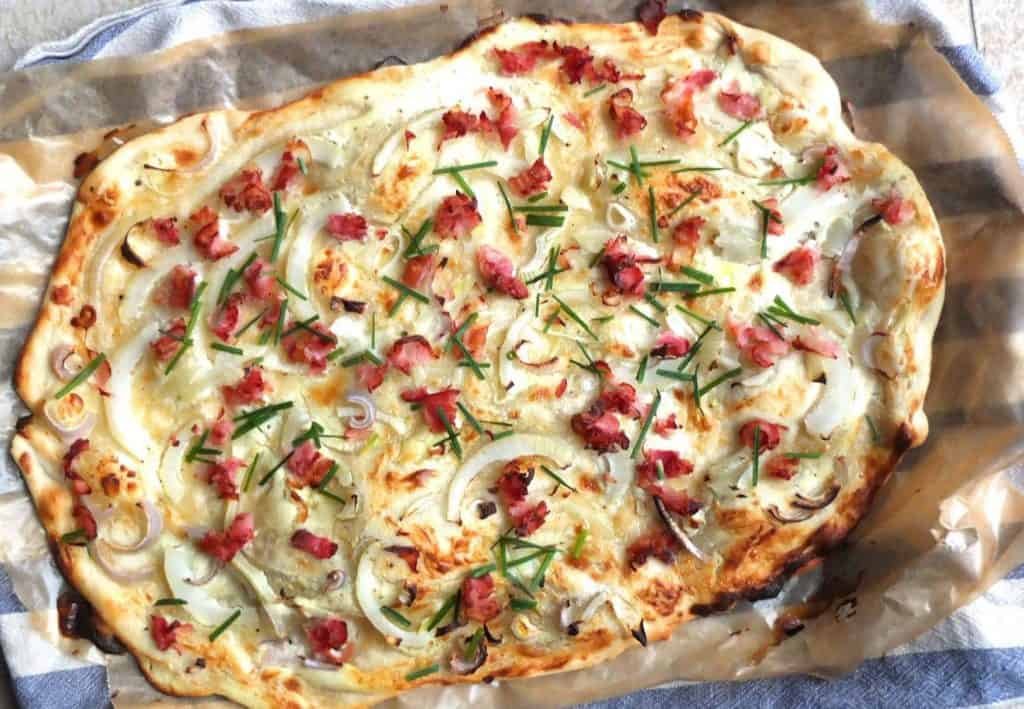
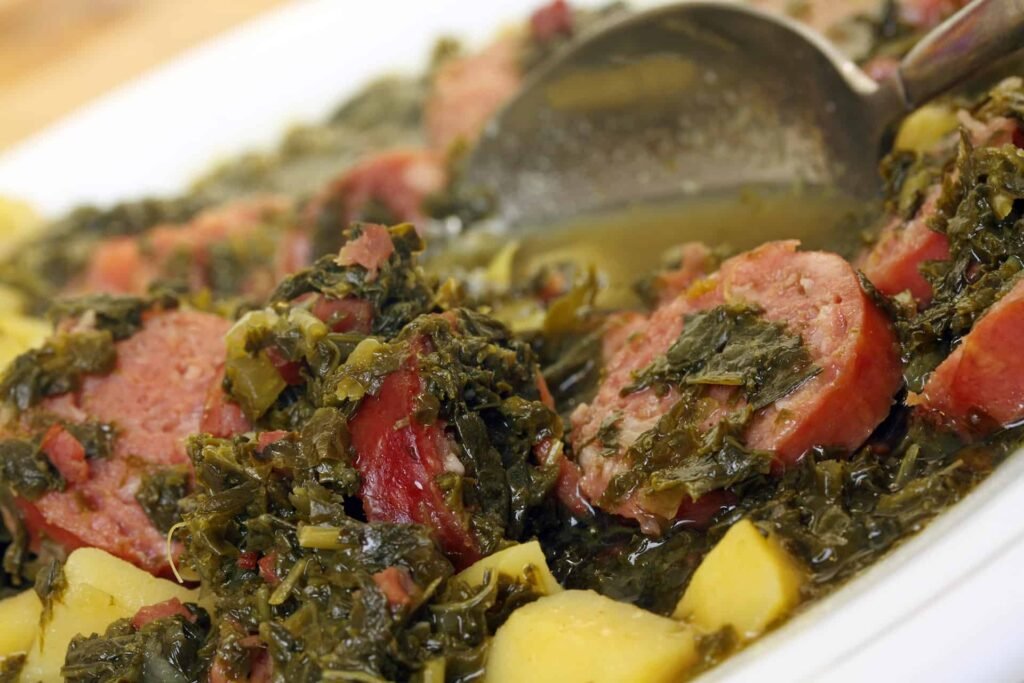
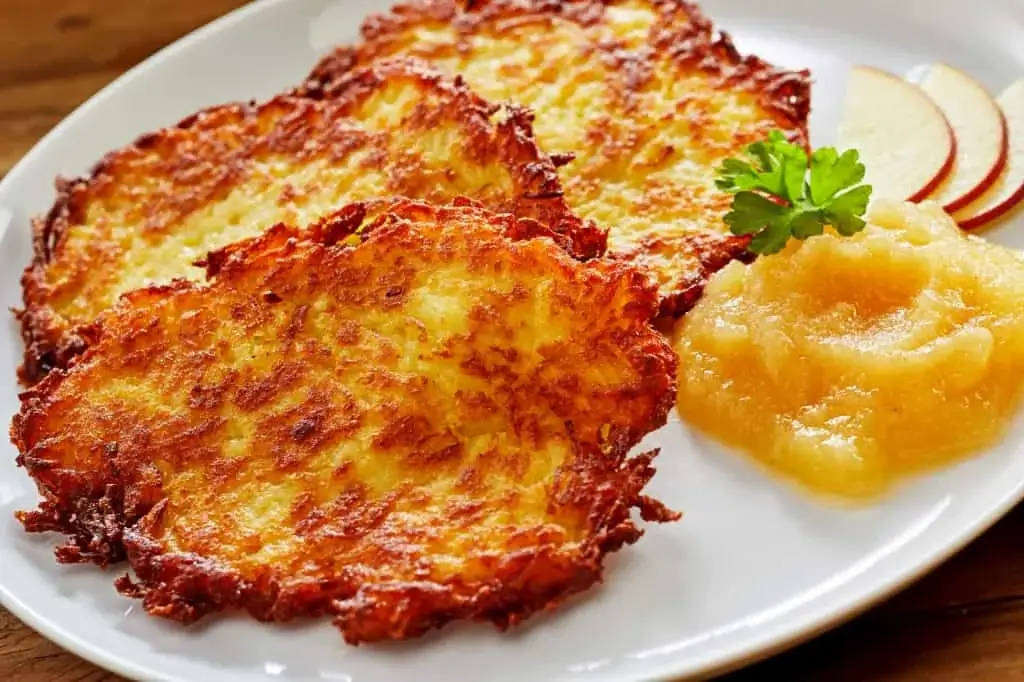
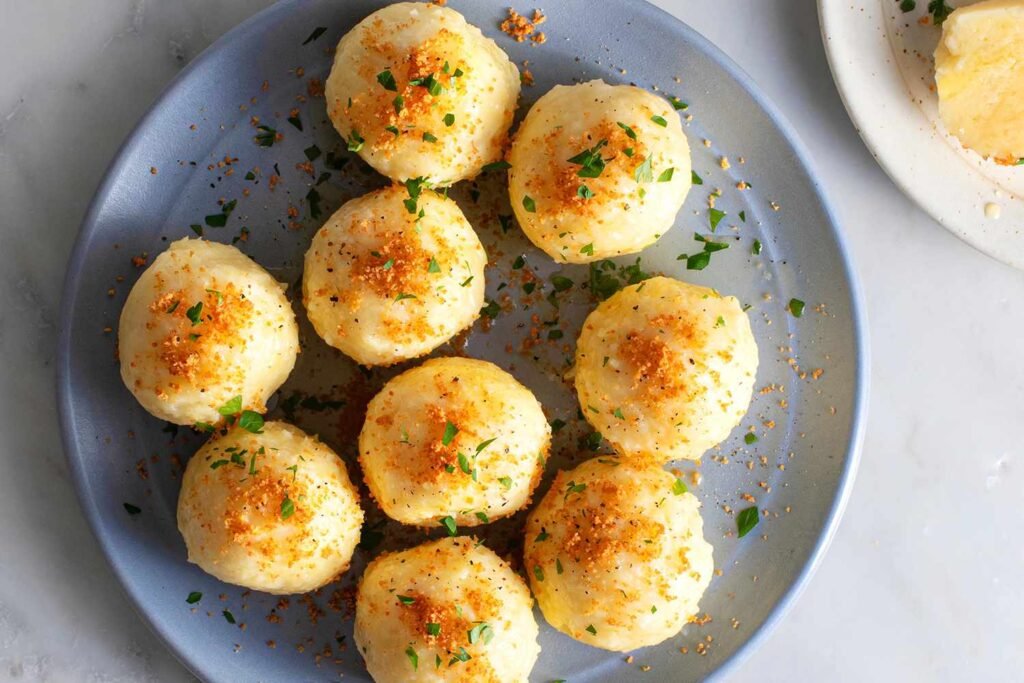
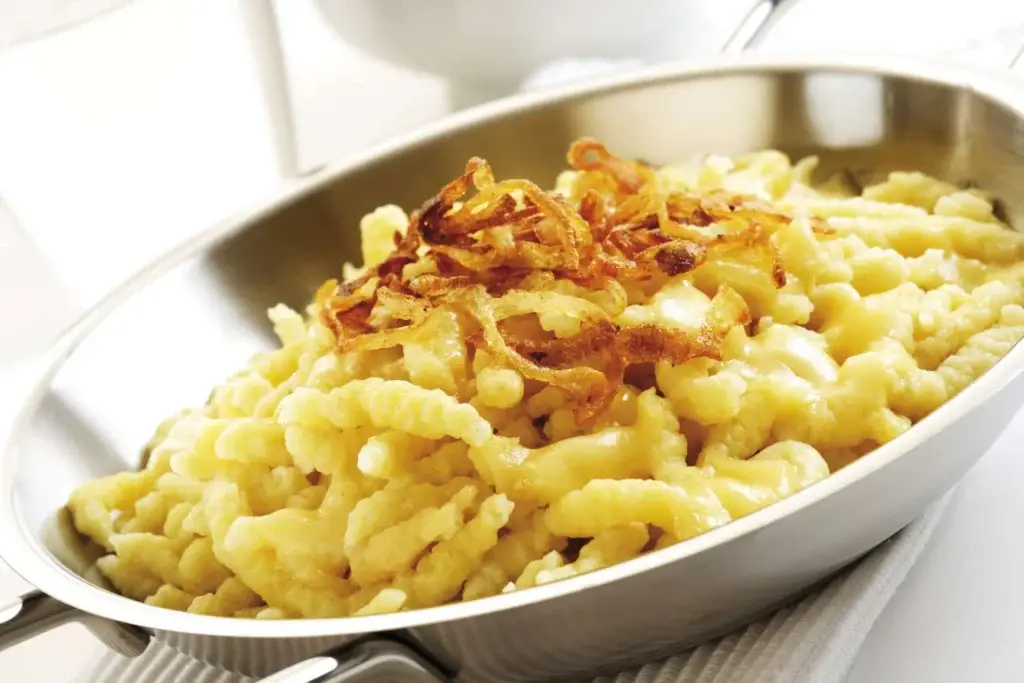
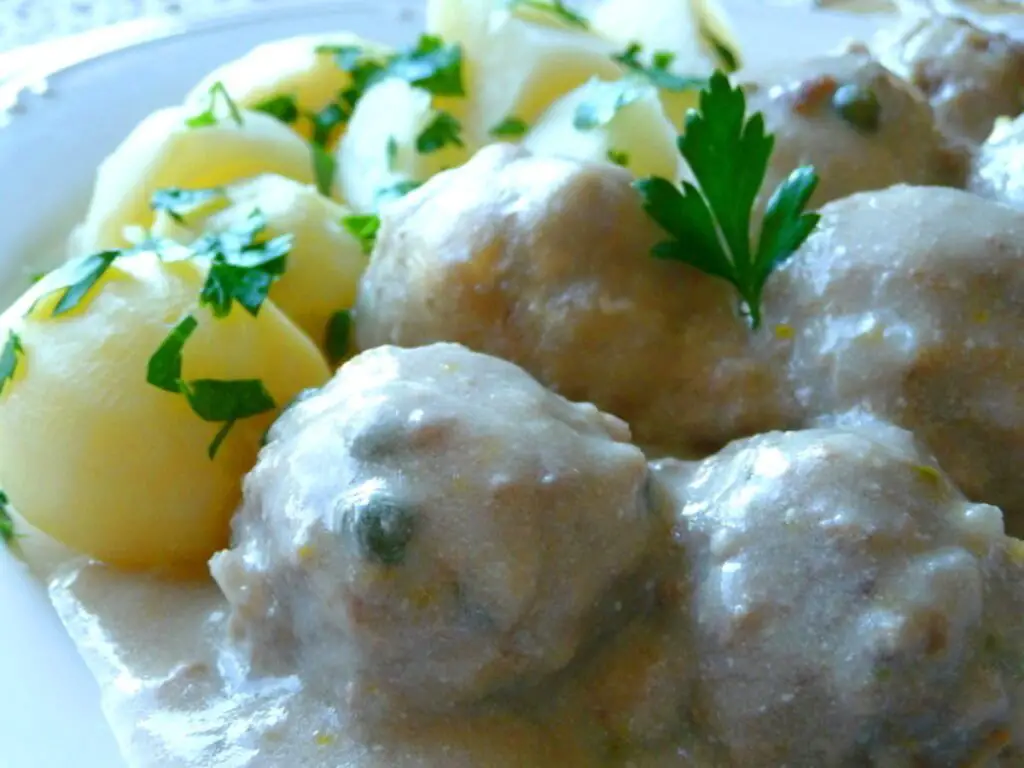
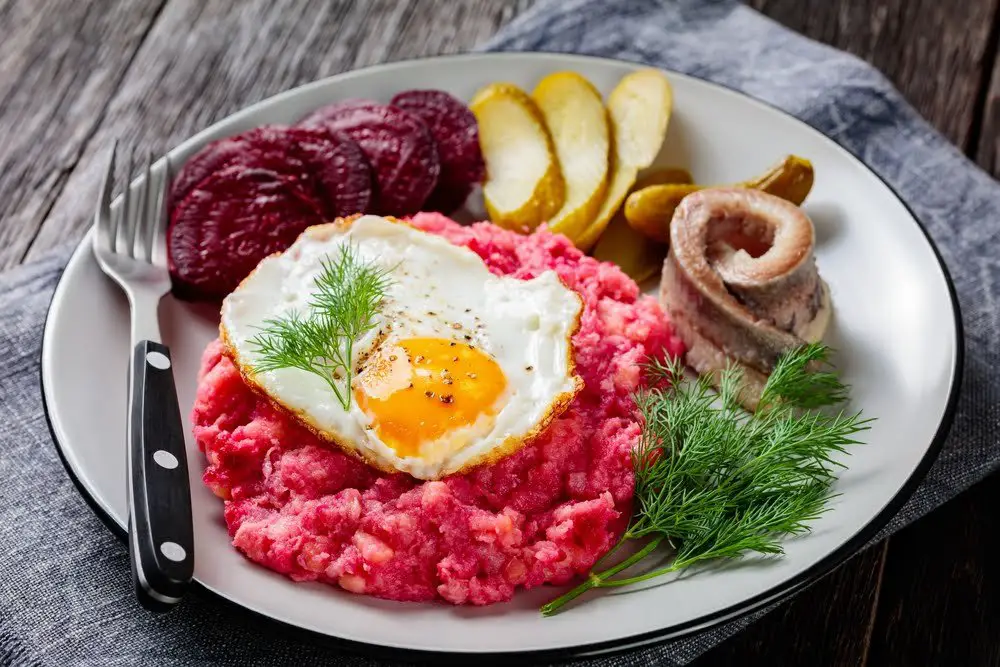
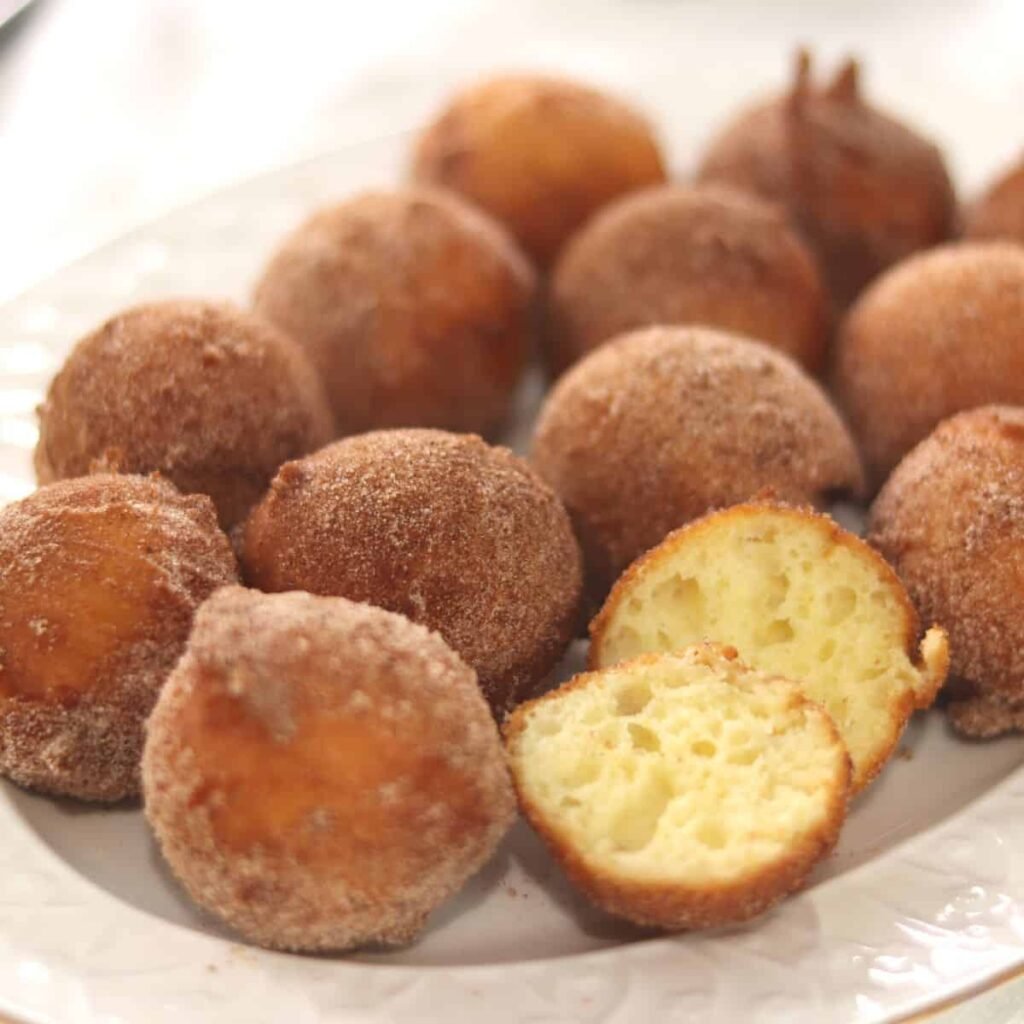
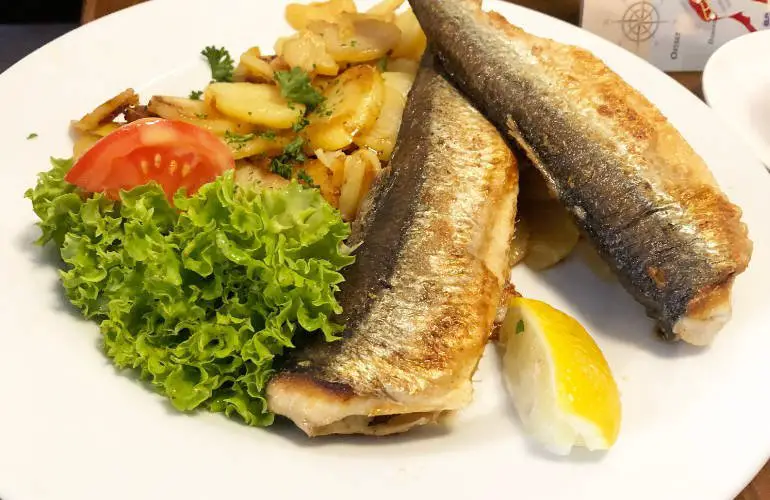
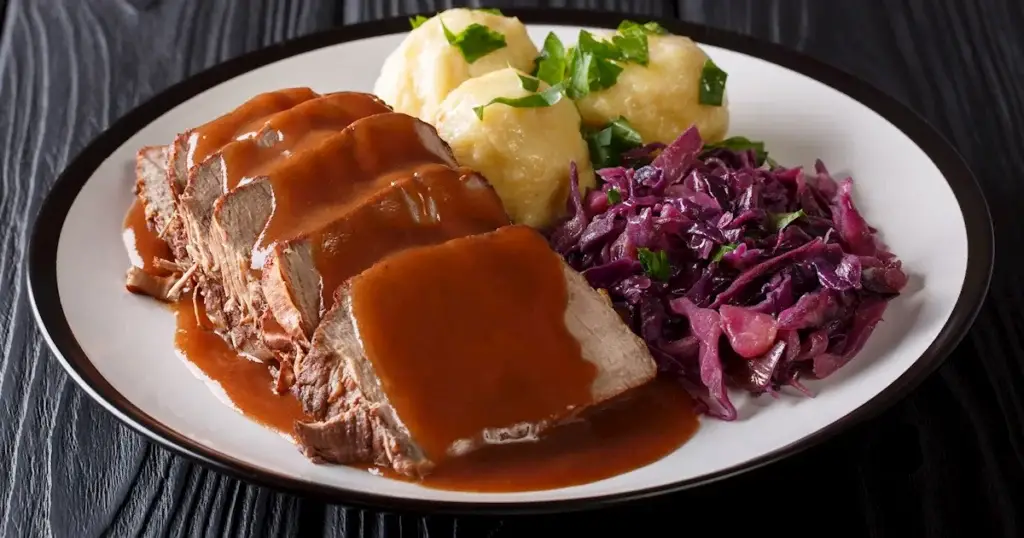
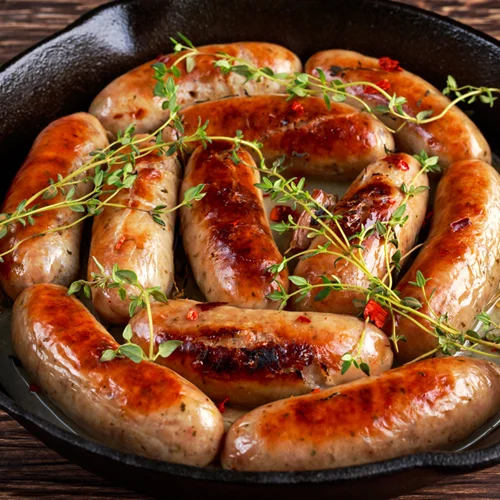
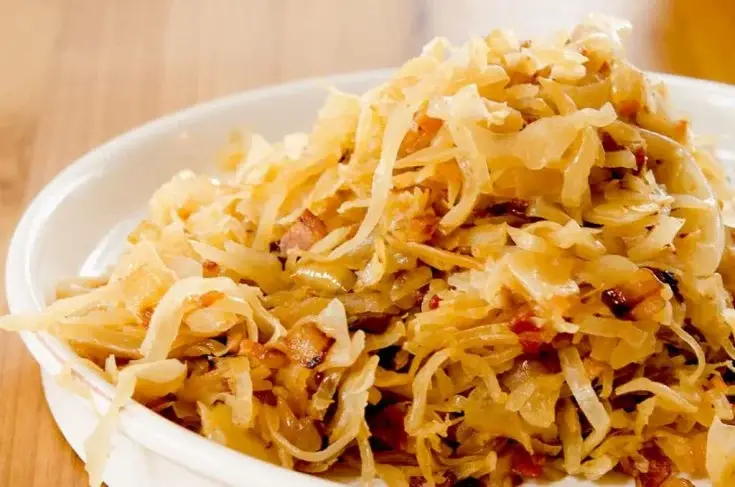
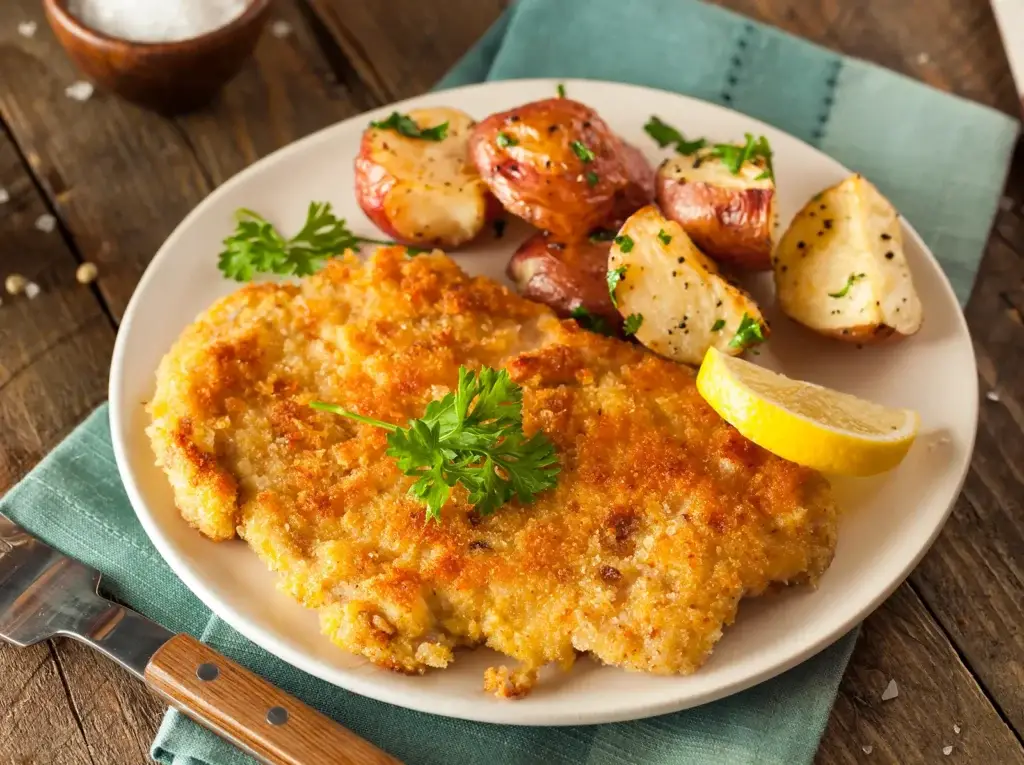
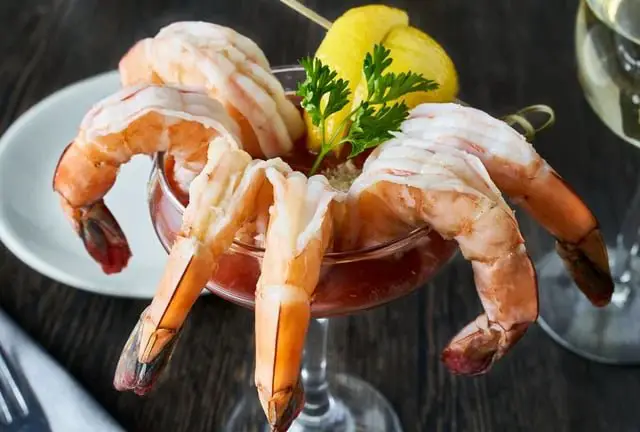
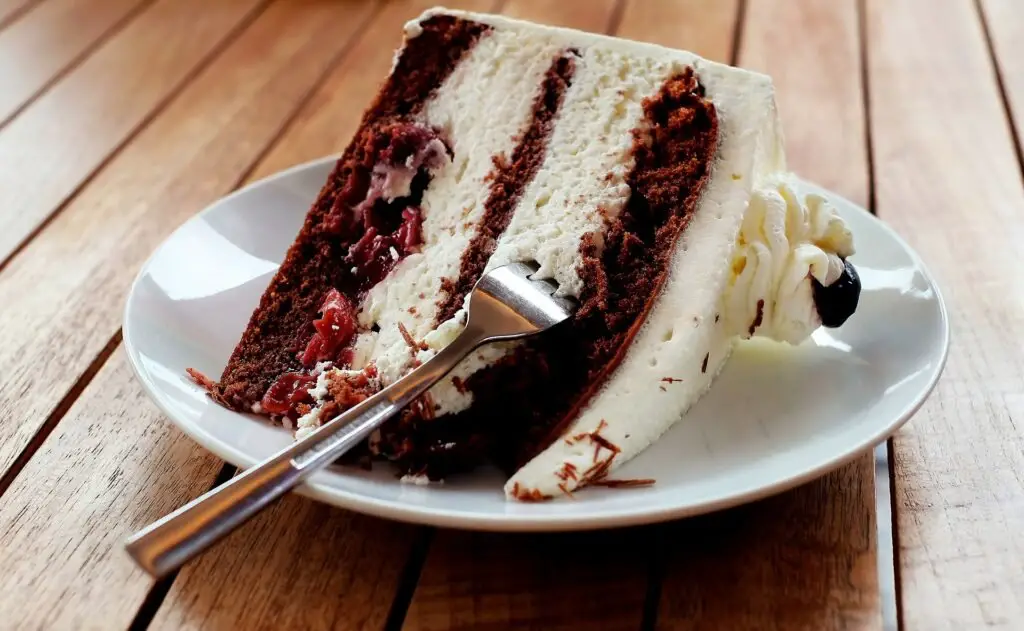
10 Interesting Facts about Germany

Germany, the land of fairy tales, cuckoo clocks, and efficiency, holds more than meets the eye. While Oktoberfest and pretzels steal the spotlight, a treasure trove of quirky and fascinating facts awaits those who dig deeper.
So, grab your curiosity and join us as we uncover 10 unexpected gems about this diverse and intriguing nation:
Bottle Deposit Bonanza
Imagine returning your empty bottles and cans for a refund? In Germany, it’s the norm! This “Pfand” system fosters recycling and keeps streets clean, earning them the title of “recycling champions.”
Bread Heaven
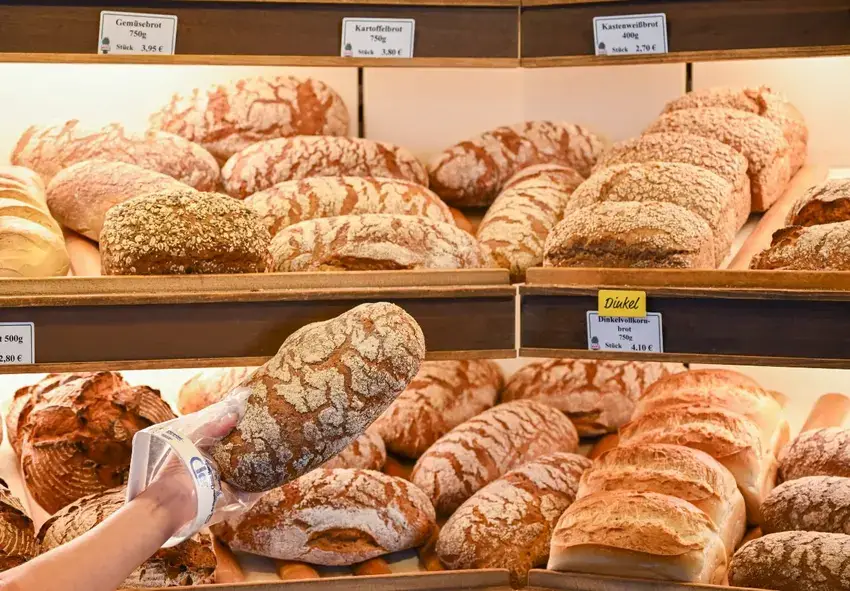
Forget one type of bread – Germany boasts over 2,000 varieties! From hearty pumpernickel to sweet pretzels, each region boasts its own specialty. Be warned, trying them all might be a delicious (and carb-filled) challenge!
Sunday Silence
Craving a power drill on a lazy Sunday morning? Think again! Strict noise ordinances dictate quiet Sundays, promoting rest and respect for neighbors. So, keep the DIY projects for weekdays!
Autobahn Anomaly

Buckle up, speed demons! While most German highways have no official speed limit, responsibility reigns supreme. Drivers self-regulate based on conditions and weather, proving trust and awareness go a long way.
Beer Purity Law
Imagine beer brewed according to a 500-year-old law! The Reinheitsgebot, enacted in 1516, allows only water, barley, and hops – resulting in some of the world’s most celebrated beers.
Sausage Symphony

Forget hot dogs – Germany boasts over 1,500 sausage varieties! From the iconic currywurst to the white “Weißwurst,” each region and occasion has its own unique sausage star. Prepare for a flavor explosion!
Christmas Tree Capital
The tradition of Christmas trees originated in Germany! In fact, the world’s first documented Christmas tree was adorned in Straßburg in 1605.
Nudity Normality

Public nudity in designated areas like saunas and parks is surprisingly common in Germany. This acceptance of the body stems from a focus on health and well-being, not prurience.
Fairy Tale Footprints
Immerse yourself in Grimm’s Brothers’ world! Explore the medieval town of Hamelin, where the Pied Piper legend lives on, or visit Rapunzel’s tower in Hessen.
Hidden Treasure Trove

Forget just castles and cathedrals – Germany boasts over 40 UNESCO World Heritage Sites, from prehistoric caves to medieval towns. Each site whispers tales of a rich and diverse history.
So, there you have it – 10 unexpected facts that paint a fresh picture of Germany. Beyond the stereotypes lies a land brimming with fascinating quirks, delicious traditions, and a unique approach to life. Ready to explore further? Pack your bags, grab your curiosity, and prepare to be surprised by the true magic of Germany!
Germany’s History and the Effect It Has Had on the Cuisine

Germany’s history, rich and layered like a Black Forest cake, whispers tales not just of emperors and wars, but also of simmering stews and mouthwatering sausages. Each era has left its mark on the nation’s diverse cuisine, creating a tapestry of flavors that continues to tantalize taste buds today.
Let’s embark on a delicious journey through time, exploring how different periods have shaped Germany’s unique culinary identity.
Roman Revelry: Spices, Sauerkraut, and Smoked Delights (1st Century BCE – 5th Century CE)
Imagine Roman legions marching across Germania, not just conquering lands, but bringing with them a treasure trove of spices, herbs, and the art of winemaking. These newfound ingredients added a zing to local fare, forever changing the German palate.
And who can forget sauerkraut, believed to have originated during this era? This tangy fermented cabbage still reigns supreme as a national favorite, a testament to the lasting impact of Roman influence.
But German ingenuity didn’t stop there. Faced with harsh winters and no refrigerators, they mastered the art of smoking meats.
Picture succulent pork shoulders (schweinshaxe) and hearty beef briskets (rinderbraten) emerging from smoke-filled chambers, ready to nourish hungry families during colder months.
Regional Feasts: A Symphony of Flavors
Fast forward to the Middle Ages, when Germany transformed into a patchwork of independent states, each with its own culinary symphony. In Bavaria, where hearty appetites reigned, roasted pork knuckles (schweinsbraten) became a king (or should we say, pig?) among dishes.
Meanwhile, in bustling Berlin, a new star emerged – the iconic currywurst, a marriage of savory sausage and spicy curry ketchup.
Across the land, local ingredients like potatoes, cabbage, apples, and onions danced on plates, joined by fish, pork, and beef in endless variations. Each region boasted its own spice blend, with caraway seeds adding warmth to northern stews, and juniper berries lending their unique aroma to southern roasts. It was a culinary kaleidoscope, each bite reflecting the unique character of its land.
Faith, Flavor, and Fusion: Religion’s Influence
Religion, too, played a significant role in shaping German cuisine. During Lenten periods, fish dishes like herring and cod took center stage, offering a delicious alternative to meat.
And when Jewish communities flourished across the land, they brought with them a wealth of new flavors. Gefilte fish, matzo ball soup, and the slow-cooked cholent stew became cherished additions to German tables, a testament to cultural exchange and the power of shared meals.
Industrial Revolution: Convenience & Compromise (19th Century Onwards)

The Industrial Revolution ushered in a new era, impacting not just factories but also kitchens. Improved transportation made ingredients more readily available, while innovations like canning and processed meats promised convenience.
While this had its benefits, it also led to some simplification of classic recipes in the pursuit of speed and scale.
The Legacy Lingers On
From Roman spices to regional specialties, religious influences to modern conveniences, German cuisine reflects a rich tapestry woven over centuries. Each bite tells a story, a testament to the ingenuity and adaptability of generations past.
So, the next time you savor a plate of sauerkraut, a juicy currywurst, or a hearty stew, remember – you’re not just enjoying a meal, you’re embarking on a delicious journey through German history.
References
- Discover What Influenced German Cuisine
- History of German Cuisine: Exploring the Rich Flavors and Cultural Significance
- An Overview of German Food History
How the German Climate and Geography has Influenced the Cuisine
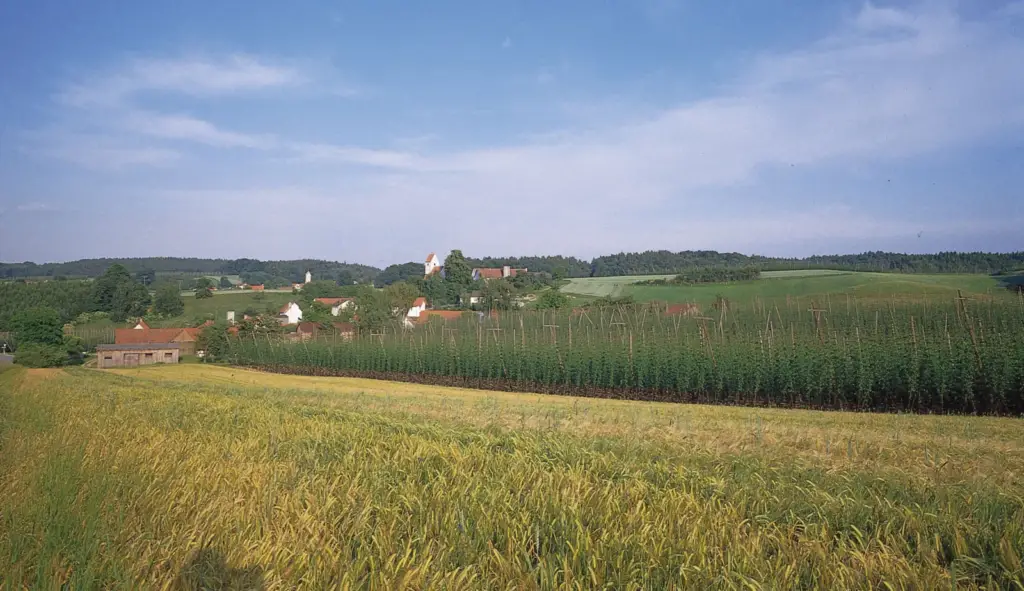
Forget the stereotypes of endless sausages and heavy beers – German food is a vibrant tapestry woven from history, geography, and tradition. Each bite tells a story, transporting you from sun-drenched summer barbecues to cozy winter feasts, reflecting the unique character of this fascinating land.
Location, Location, Flavor
Imagine Germany, nestled in the heart of Europe, sharing a surprising parallel with Newfoundland – long summer nights! These balmy evenings are perfect for outdoor gatherings, where laughter mingles with the aroma of grilled sausages and potato salad.
But come winter, the land transforms into a wonderland of snow and ice, demanding hearty stews and warming roasts to nourish body and soul.
A Symphony of Region
From the mountainous slopes of Bavaria to the fertile plains of Saxony, each region boasts its own culinary symphony. Seafood dominates along the coastline, while the Black Forest offers up its bounty of wild game and smoked meats.
Even the proximity to rivers and lakes plays a role, with freshwater fish starring in countless dishes.
Ancient Secrets, Modern Twists
Step back in time and discover age-old preservation techniques that continue to define German cuisine.
Salting, smoking, curing, and pickling – these aren’t just words, they’re flavors! Imagine the tangy bite of “matjes” (pickled herring), the rich aroma of “sauerbraten” (marinated roast beef), and the satisfying crunch of “sauerkraut” (fermented cabbage).
These iconic dishes whisper tales of generations past, showcasing the ingenuity and resourcefulness of the German people.
From Humble Beginnings

Wind the clock back even further, to a time when prehistoric Germans relied on basic ingredients. Wheat, barley, and livestock formed the foundation of their diet, seasoned with humble herbs like parsley, celery, and dill. Life was simple, but flavorful.
Roman Rendezvous
Then came the Romans, marching in with exotic spices, fruit trees, and grapevines. This cultural exchange added a new layer of complexity to German cuisine, paving the way for exciting flavor combinations that continue to tantalize taste buds today.
A Modern Twist on Tradition
While Germans cherish their heritage, they’re not afraid to innovate. Today’s chefs masterfully incorporate traditional ingredients into lighter dishes, catering to modern palates.
Think succulent lamb chops with rosemary, delicately poached fish with dill sauce, or creative salads bursting with seasonal vegetables.
The Flavorful Finale
Germany’s cuisine is a rich tapestry, woven from the threads of geography, climate, and historical influences. It’s a land where hearty classics stand shoulder-to-shoulder with modern interpretations, offering a diverse and delicious experience for every palate.
References
- An Overview of German Food History
- What other countries influenced German cuisine and culture?
- Traditional German Food
- German cuisine: culture, traditions, and popular dishes
Understanding the Essence of German Cuisine

Buckle up, food adventurers, as we delve into the soul of German cuisine, exploring what makes it so distinct and delightful.
A Symphony of Seasons
Imagine sun-drenched summer nights in Bavaria, the air filled with the aroma of sizzling sausages on open grills. Picture cozy winter evenings in the Black Forest, where hearty stews simmer in cast iron pots, warming you from the inside out.
Germany’s cuisine dances to the rhythm of the seasons, with each dish reflecting the unique bounty of the land. Summer brings vibrant salads and fresh seafood, while fall ushers in comforting pumpkin soups and game dishes.
Winter is all about rich, slow-cooked stews and hearty root vegetables, and spring celebrates the rebirth of nature with asparagus and herbal delights.
Regional Gems
From the snow-capped peaks of the Alps to the fertile plains of the Rhine Valley, Germany’s diverse landscape fosters a kaleidoscope of regional specialties. In Bavaria, savor the smoky sweetness of pork knuckles (schweinshaxe) and indulge in fluffy potato dumplings (knödel).
In Berlin, bite into the iconic currywurst, a marriage of savory sausage and spicy ketchup. Along the coast, indulge in succulent seafood dishes like herring and cod, while the Black Forest beckons with smoked meats and wild game specialties.
Each region boasts its own unique flavor profile, influenced by local ingredients, traditions, and history.
Beyond the Meat Fest
While meat plays a significant role in German cuisine, it’s far from a one-note symphony. Vegetarians have a delightful surprise awaiting them. From hearty lentil stews and fluffy potato pancakes to creamy mushroom soups and tangy sauerkraut salads, Germany offers a wealth of plant-based options that are both flavorful and satisfying.
And let’s not forget the bread! Imagine crusty loaves fresh from the oven, perfect for dipping in creamy spreads or hearty goulash.
Spices with Soul
German cuisine isn’t about fiery heat, but rather about subtle depth of flavor. Think caraway seeds adding warmth to hearty rye bread, juniper berries lending their earthy aroma to roasts, and mustard and horseradish providing a gentle kick.
Herbs like parsley, dill, and chives add freshness and balance, creating a symphony of flavors that is uniquely German.
Modern Twists on Tradition
While Germans cherish their culinary heritage, they’re not afraid to embrace innovation. Today’s chefs are reinterpreting classic dishes with a modern twist, incorporating lighter ingredients and international influences.
Imagine delicate dumplings filled with seasonal vegetables or creative salads bursting with fresh herbs and local cheeses. The essence of German cuisine remains at the heart, but with a modern flair that caters to contemporary palates.
The Essence Unwrapped
So, what truly makes German cuisine different? It’s the harmonious blend of tradition and innovation, the celebration of local ingredients and seasonal bounty, and the deep connection to the land and its people.
The cuisine embraces hearty comfort food alongside lighter options, catering to diverse preferences. It’s a journey through history and geography, reflected in every plate. It’s an experience that goes beyond stereotypes, inviting you to discover the true soul of German cuisine,
German Culinary Traditions
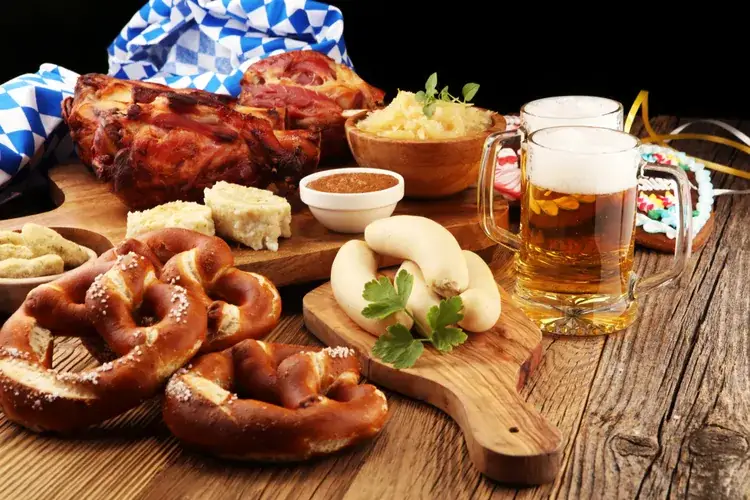
Germany’s culinary heritage is a delightful tapestry woven from centuries of history, regional diversity, and cultural influences. From hearty sausages to delicate pastries, German cuisine reflects the soul of a nation that celebrates both tradition and innovation.
Let’s embark on a gastronomic adventure through the heart of Deutschland.
1. The Roots of Flavor
Ancient Beginnings
German food traditions trace back to prehistoric times when early inhabitants relied on simple staples. Grains like wheat and barley, along with pasture-raised livestock, formed the backbone of their diet. Spices were scarce, but parsley, celery, and dill added subtle flavors.
Roman Influence
The Romans left an indelible mark on German cuisine. They introduced fruit tree cultivation, grapevines, and the art of pickling. One enduring legacy is sauerkraut, a fermented cabbage dish that originated during the Roman Empire.
Germans embraced this tangy delight, and it remains a beloved side dish today.
Regional Delights
Bavaria: Pork and Pretzels
Bavaria, with its rolling hills and beer gardens, is synonymous with hearty fare. Picture yourself in a cozy Munich beer hall, savoring a crispy pork knuckle (schweinshaxe).
The crackling skin, tender meat, and savory spices create a symphony of flavors. Pair it with a soft pretzel and a stein of beer—pure Bavarian bliss.
Berlin: Currywurst and Street Food
Berlin, a melting pot of cultures, boasts its own culinary gems. Currywurst, a street food sensation, combines sliced sausages with a zesty curry ketchup. It’s the ultimate late-night snack after dancing at a Berlin nightclub. Don’t forget the side of crispy fries!
The Spice Trail
Mustard and Horseradish
German cuisine celebrates bold flavors. Mustard, whether slathered on sausages or pretzels, adds a kick. Horseradish, grated fresh, elevates roast beef or smoked fish.
These condiments are the secret weapons in a German kitchen.
Juniper Berries and Game Meat
In the Black Forest and beyond, juniper berries infuse game meats like venison and wild boar. The result? Earthy, aromatic dishes that evoke ancient hunting traditions. Pair it with a glass of robust red wine, and you’re transported to the heart of the forest.
Modern Innovations
From Bratwurst to Avocado Toast
Modern German chefs blend tradition with contemporary flair. Classic sausages meet avocado toast, and ancient grains find new life in artisanal bread. Lighter menus incorporate seasonal produce, emphasizing freshness and balance.
Sweet Endings: Pastries and Kaffeezeit
No discussion of German cuisine is complete without pastries. Picture a cozy afternoon in a Viennese-style café. You’re sipping coffee (known as Kaffeezeit) and indulging in a slice of Black Forest cake or a delicate strudel.
The layers of chocolate, cherries, and whipped cream tell stories of centuries past.
Prost! (Cheers!)
Beer and Gemütlichkeit
German culinary traditions thrive alongside a pint of beer. Whether it’s a malty dunkel, a refreshing pilsner, or a spicy weizenbier, beer is the lifeblood of German conviviality (Gemütlichkeit). Raise your glass, clink it with friends, and savor the flavors of a nation that knows how to celebrate.
In conclusion, German culinary traditions are a harmonious blend of old-world techniques, regional pride, and a dash of modern flair. So next time you savor a warm pretzel or a rich slice of cake, remember that you’re partaking in a delicious legacy that spans centuries—a true taste of Germany.
References
- Expatica: German cuisine: culture, traditions, and popular dishes
- German Culture: Traditional German Food
- Swedish Nomad: Traditional German Food – 15 Dishes to Eat in Germany
Exploring Germany’s Ingredients: The Flavors of German Cuisine
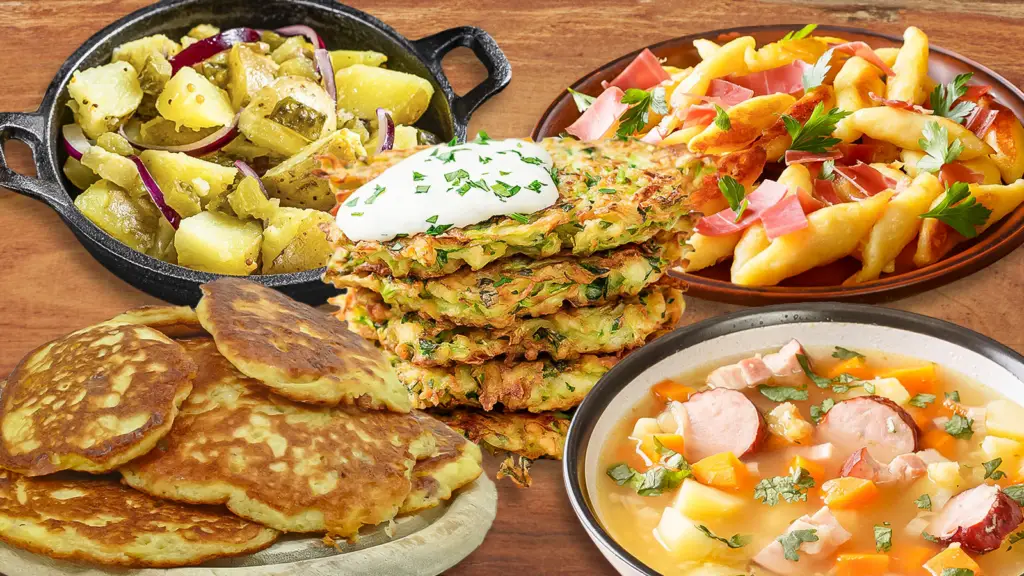
Whether you’re exploring a bustling beer hall in Bavaria or savoring street food in Berlin, these essential German ingredients play a starring role in every dish.
Cabbage: The Beloved Brassica
Cabbage holds a special place in German hearts. From the iconic sauerkraut (fermented white cabbage) to the sweet and hearty red cabbage stewed with raisins and apples, Germans adore this versatile vegetable.
Don’t forget the lesser-known blue cabbage, mainly enjoyed in Bavaria, or the familiar green cabbage (known as Grünkohl), which predates kale’s hipster status.
Sausage: Wurst and More
Sausage (or wurst) is the quintessential German food item. With over 1,500 variations produced across the country, sausages are stars in their own right.
Whether it’s the smoky bratwurst, the spicy currywurst, or the savory knackwurst, these links echo Germany’s culinary philosophy—simple yet hearty.
Quark: Not Your Ordinary Cheese
Quark, a fresh cheese similar to cottage cheese (but never call it that in Germany!), is a staple. Made without rennet, quark is straightforward and versatile.
Spread it on sandwiches, add it to desserts, or toss it into salads—the possibilities are endless.
Juniper Berries: Beyond Gin
Juniper berries aren’t just for gin lovers. These little flavor bombs enhance gamey meats like geese and duck. Germany’s lush forests provide an abundance of juniper berries, making them a common ingredient in dishes like sauerkraut.
Potatoes: Kartoffeln Forever
Potatoes (or kartoffeln) are bona fide German staples. Introduced from South America in the 16th century, they quickly became essential. From Kartoffelklöße (potato dumplings) to kartoffelpuffer (potato pancakes) and Kartoffelsalat (potato salad), potatoes are woven into Germany’s culinary fabric.
Beer: The Liquid Gemütlichkeit
No discussion of German ingredients is complete without mentioning beer. Whether it’s a malty dunkel, a refreshing pilsner, or a spicy weizenbier, beer flows through the veins of German conviviality (Gemütlichkeit). Prost!
German food ingredients harmonize tradition, innovation, and a dash of indulgence. So next time you enjoy a plate of sauerkraut or raise your beer stein, remember—you’re partaking in a delicious legacy that spans centuries.
Germany’s National Food
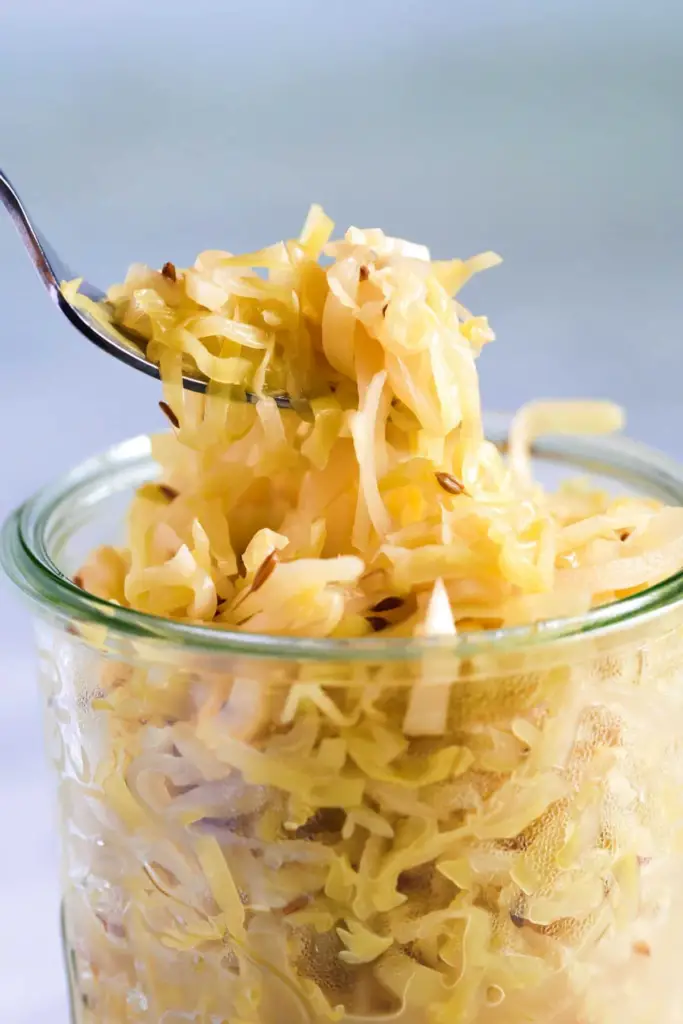
Germany’s national food is sauerkraut, which is made from fermented cabbage. It is often served as a side dish and is known for its sour taste. Sauerkraut is a staple in German cuisine and is a popular accompaniment to sausages and other meats.
Regional Specialties and German Cuisine Diversity

Germany’s rich culinary traditions offer a diverse range of dishes that differ from region to region. Each region has its own unique specialties that reflect the local culture and history.
In Bavaria, for example, you can find hearty dishes such as schnitzel and dumplings, while in the Rhineland, you can sample the delicate flavors of potato pancakes and sauerbraten. The northern coastal regions offer an abundance of fresh seafood, such as herring and shrimp, while the eastern regions are known for their smoked meats and sausages.
| Region | Specialties |
|---|---|
| Bavaria | Schnitzel, dumplings, pretzels, beer |
| Rhineland | Potato pancakes, sauerbraten, Riesling wine |
| Northern Coastal Regions | Herring, shrimp, smoked fish |
| Eastern Regions | Smoked meats, sausages, mustard |
These regional specialties are an important part of German gastronomy, reflecting the country’s diverse cultural heritage and traditions.
Traditional Examples of German Food
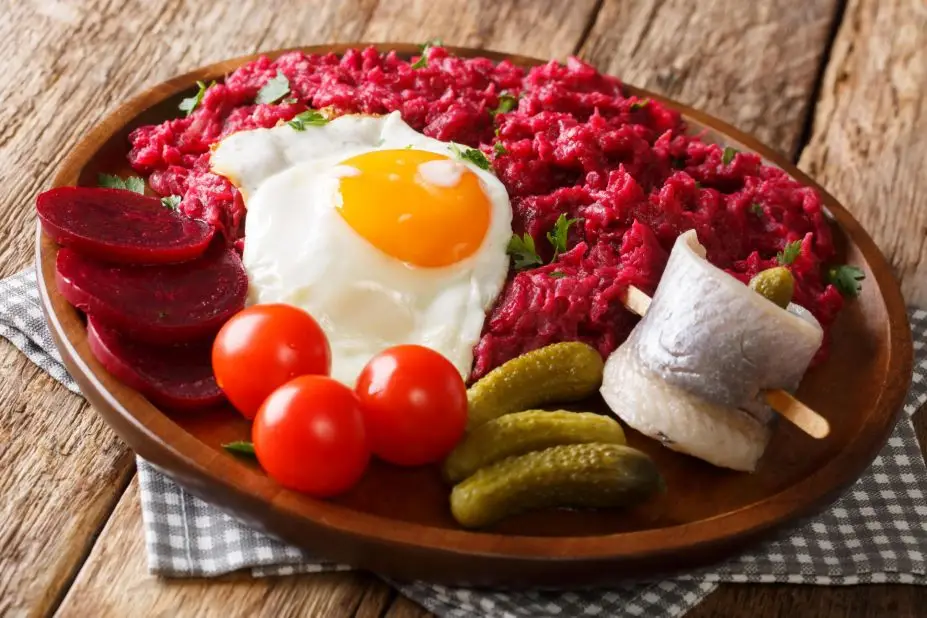
When it comes to German cuisine, hearty flavors, savory sausages, and comforting dishes take center stage. From cozy beer halls in Bavaria to bustling street food markets in Berlin, Germany’s food scene is a delightful blend of tradition and innovation.
Let’s explore five iconic German dishes that will transport your taste buds straight to the heart of Deutschland.
Bratwurst (Grilled Sausage)
Bratwurst epitomizes traditional German food. These sausages, made from ground pork, veal, or beef, are pan-fried or roasted until crispy.
Whether enjoyed with mustard at a pub, paired with sauerkraut, or served as fast food, bratwurst is a beloved staple.
Schnitzel (Breaded Cutlet)
A thin slice of meat, pounded flat, breaded, and fried—that’s a schnitzel! While pork is the meat of choice in Germany, variations like Wiener Schnitzel (layered with ham and cheese) are equally popular.
Pair schnitzel with fried potatoes and creamy sauces for a classic German meal.
Brezeln (Pretzel)
Brezeln, better known as pretzels, are soft, baked pastries made from wheat dough. Tie them into knots, sprinkle with sea salt and ground cheese, or top with cinnamon sugar.
These savory treats are perfect for snacking or dipping in mustard.
Braised Cabbage
Braised cabbage is a quintessential German dish. Combining cabbage with broth and vegetables creates a flavorful side that’s both comforting and nutritious.
It’s an acquired taste that pairs well with hearty meats and creamy sauces.
Labskaus
Labskaus, a lesser-known gem, hails from northern Germany. This sailor’s dish features salted meat (often corned beef), mashed potatoes, onions, and beetroot.
It’s a unique blend of flavors that reflects the seafaring heritage of the region.
German food celebrates simplicity, quality ingredients, and a love for gathering around the table. So whether you’re savoring a schnitzel or raising your beer stein, remember that each bite carries centuries of tradition and a dash of Gemütlichkeit.
References:
- The Planet D: German Food: 20 Traditional Dishes To Try in Germany or At Home
- The Kitchen Community: 25+ Traditional German Recipes
- Executive Thrillseeker: Traditional German food to try in Germany
- Berlitz: Traditional German & Austrian food dishes
Exploring the German Street Food Scene
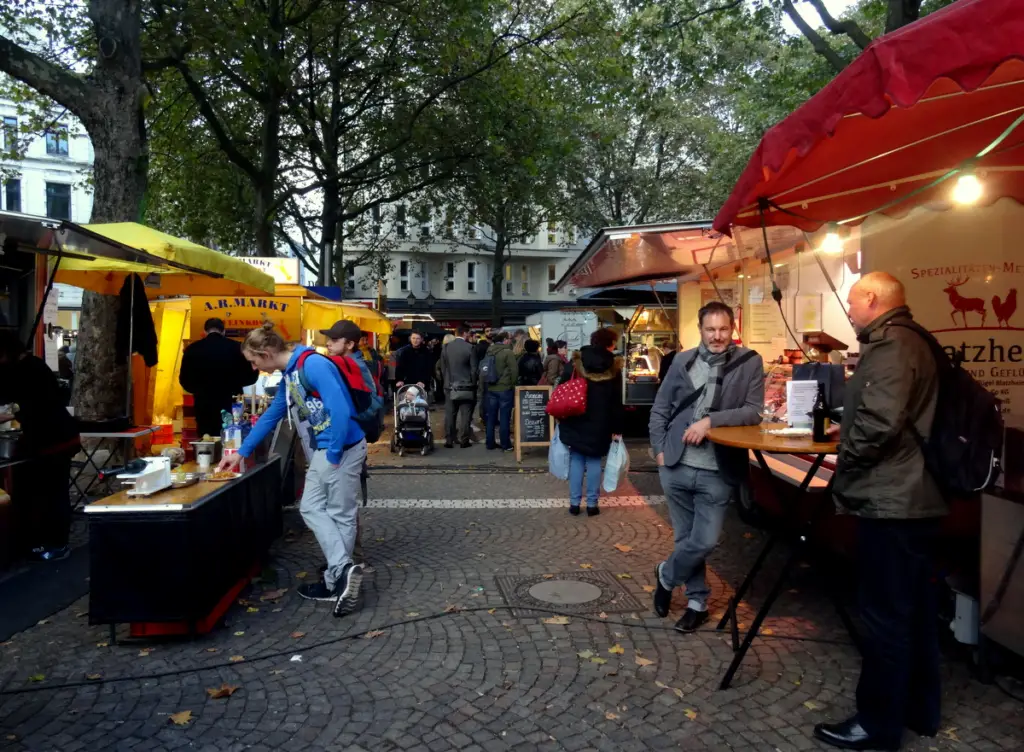
German street food is more than just a quick bite; it’s a cultural experience, a journey through generations-old recipes and local favorites.
A Bite of History
From medieval market stalls to modern food trucks, street food has been a cornerstone of German culture for centuries, serving as a convenient and affordable way to nourish busy populations.
Today, the German street food scene thrives, offering a delicious blend of classics and innovative creations, catering to diverse preferences and dietary needs. But where should you start your delicious journey?
City Gems with Sizzling Sights and Bites
Berlin
The self-proclaimed “capital of cool” doesn’t disappoint when it comes to street food. Dive into the iconic currywurst, a marriage of savory sausage and spicy ketchup, or indulge in the crispy perfection of “Kartoffelpuffer” (potato pancakes).
Don’t miss the vibrant street food markets like Hackescher Markt and Mauerpark for a truly immersive experience.
Cologne
This Rhine River city boasts a lively street food scene, especially during its famous Karneval celebrations. Sample the traditional “Halve Hahn” (open-faced bread roll with cheese and onions) or savor the hearty “Kölschwurst” (local sausage) while sipping on the signature Kölsch beer.
Head to the Alter Markt square or the Ehrenfeld district to discover hidden culinary gems.
Hamburg
This maritime hub offers a unique street food experience. Indulge in the legendary “Fischbrötchen” (fish sandwich) piled with fresh seafood, or savor the “Franzbrötchen,” a cinnamon-swirled pastry steeped in history.
Head to the HafenCity district or the Reeperbahn area to embark on your street food adventure.
Munich
While Oktoberfest reigns supreme, Munich offers year-round street food delights. Don’t miss the iconic “Weißwurst” (white sausage) traditionally enjoyed with pretzels and sweet mustard, or warm up with a comforting bowl of “Käsespätzle” (cheese noodles).
Explore the Marienplatz square or the Viktualienmarkt for a taste of Bavarian specialties.
Leipzig
This vibrant city offers a surprising street food scene with a multicultural twist. Sample the “Leipziger Allerlei” (vegetable stew), a local favorite, or grab a delicious “Döner Kebab” from one of the many vendors.
Explore the Augustusplatz square or the Südplatz district to discover your culinary favorites.
Beyond the 5:
This is just a glimpse into the diverse world of German street food. Remember, each city and region has its own unique specialties waiting to be discovered.
Be adventurous, explore beyond the main squares, and let your taste buds lead the way. From “Flammkuchen” (Alsatian flatbread) in the west to “Königsberger Klopse” (meatballs) in the east, Germany’s street food scene is a treasure trove of delicious surprises.
The Most Popular German Recipes
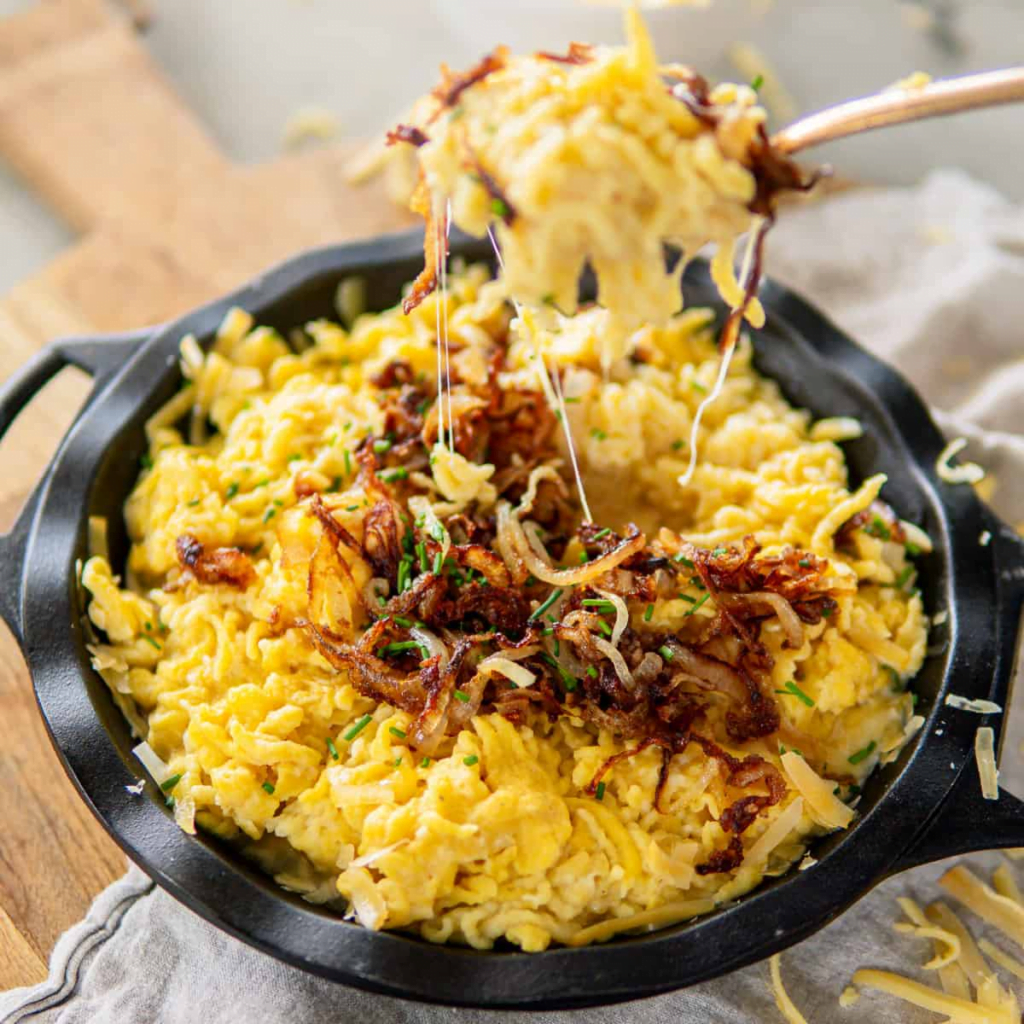
Here are 10 essential German recipes to embark on your delicious journey:
Sauerbraten
The king of German roasts, this marinated beef is slow-cooked to perfection in a tangy vinegar and wine blend. Imagine tender meat infused with herbs and spices, served with creamy mashed potatoes and crispy red cabbage – a winter warmer like no other.
Käsespätzle
Swabian comfort food at its finest, these soft, pillowy noodles are coated in melted cheese and crispy onions. Imagine gooey, cheesy goodness with a satisfying crunch – perfect for sharing on a cozy evening.
Kartoffelpuffer
Don’t underestimate the humble potato pancake! These golden-fried delights are crispy on the outside and fluffy on the inside, often served with applesauce or sour cream.
A vegetarian option that packs a flavorful punch.
Königsberger Klopse
Delicate meatballs bathed in a creamy white sauce with capers and lemon – this Prussian specialty offers a burst of elegance in every bite. Pair it with fluffy rice or mashed potatoes for a truly satisfying meal.
Flammkuchen
Imagine a lighter cousin of pizza – this Alsatian flatbread is topped with creamy crème fraîche, thinly sliced onions, and sometimes bacon or cheese. Perfect for a quick and flavorful lunch or light dinner.
Schwarzwälder Kirschtorte
The Black Forest cake is a masterpiece of chocolate, cherries, and whipped cream. Layers of rich chocolate sponge cake are layered with Kirschwasser-soaked cherries and whipped cream, creating a decadent and iconic dessert.
Quarkbällchen
These fluffy doughnut holes are made with quark cheese, giving them a unique and slightly tangy flavor. Dust them with sugar or cinnamon for a sweet treat that’s light and satisfying.
Schnitzel
Thinly pounded and breaded meat, fried to golden perfection – the schnitzel is a staple in German cuisine. Choose from pork, veal, or chicken, and pair it with mashed potatoes, fries, or a side salad for a classic and delicious meal.
Bratwurst
No list of German food would be complete without the iconic bratwurst! From the fiery currywurst of Berlin to the delicate Nürnberger Rostbratwurst, each region boasts its own unique variation. Grab a bun and your favorite toppings and enjoy the quintessential German street food experience.
Apfelstrudel
This flaky pastry filled with sweet apples, raisins, and spices is a warm and comforting dessert. Imagine the perfect blend of caramelized apples, cinnamon, and buttery pastry – a true taste of German hygge.
Bonus Tip: Pair your culinary journey with a local German beer or a glass of Riesling for an authentic experience. Prost!
How Healthy is German Food?
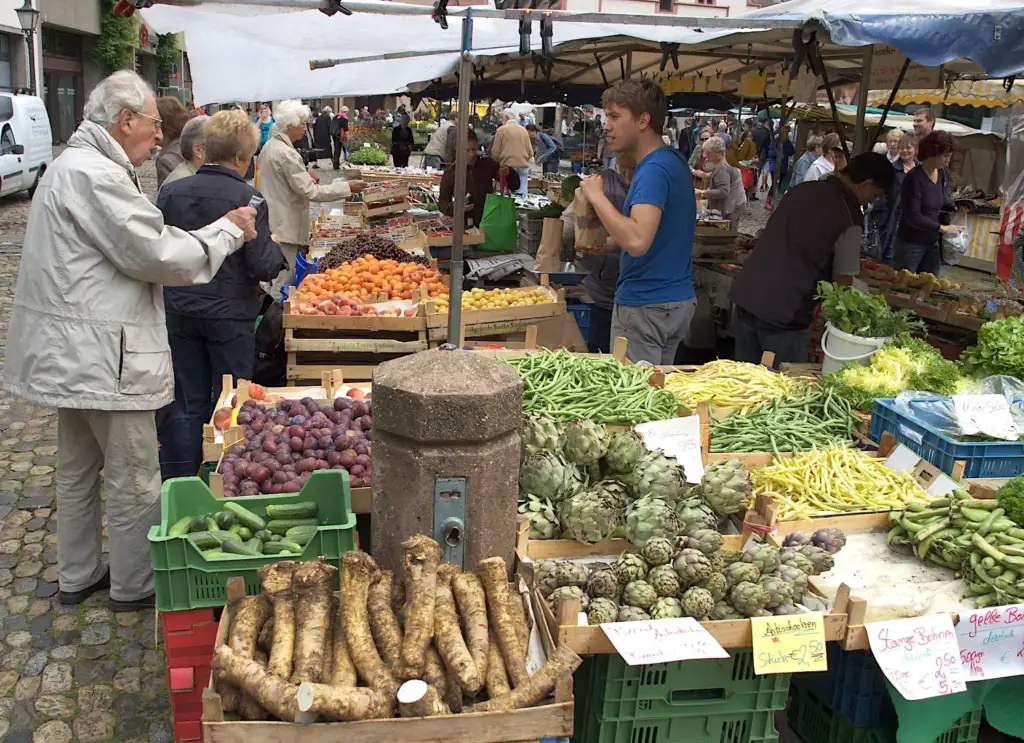
Let’s embark on a delicious journey to explore the healthy side of German cuisine and its impact on the population.
Fermented Delights
Sauerkraut, the quintessential German side dish, isn’t just a culinary icon; it’s a gut health powerhouse! This fermented cabbage is packed with probiotics, good bacteria that aid digestion and nutrient absorption, keeping your gut happy and healthy.
Spicy Superfood
Horseradish, with its fiery kick, adds more than just flavor to German meals. Packed with antioxidants, it might even be your secret weapon against free radicals, potentially offering some cancer-preventive benefits.
Cucumbers with a Kick
Gurkensalat, a refreshing cucumber salad with dill, isn’t just a palate cleanser. The cucumbers provide essential hydration, while the dill boasts anti-inflammatory flavonoids, making it a healthy and delicious addition to any plate.
Muesli: The Breakfast Champion
This fiber-rich grain cereal, often paired with yogurt, is a breakfast staple in Germany for a reason. It’s a powerful source of protein and omega-3 fatty acids, keeping you energized and satisfied throughout the morning.
The “Vegetable of Kings”
Asparagus, once reserved for royalty, is readily available in Germany and for good reason. Low in fat and cholesterol-free, this spring delicacy is also rich in vitamins, minerals, and protective compounds, making it a nutritional powerhouse.
A Portrait of Population Health
While Germany has seen positive trends in reducing cardiovascular disease (CVD) mortality, risk factors like smoking (higher than the OECD average) and high cholesterol levels remain a concern. Similarly, with a diabetes prevalence of 7.9%, awareness and management are crucial.
However, there’s a silver lining: end-stage kidney failure rates are lower than the OECD average, suggesting good access to healthcare services.
The Key Ingredient: Informed Choices
German cuisine offers a delectable balance of healthy and indulgent options. Ultimately, lifestyle choices play a significant role in population health.
By embracing traditional dishes with a health-conscious approach and making informed choices, Germans can continue to enjoy their rich culinary heritage while prioritizing well-being.
References
- 10 Healthy German Foods – Health Fitness Revolution
- A Guide to Healthy Living and Eating in Germany
- German cuisine: What Germans eat | Nutrition Report 2020
- Is German Cuisine Healthy? Uncover the Surprising Facts!
- Cardiovascular Disease and Diabetes: Policies for Better Health and Quality of Care – Germany
- Cholesterol | What We Do | World Heart Federation
- High Cholesterol Facts and Statistics: What You Need – Verywell Health
- Diabetes in Germany | National Diabetes Surveillance Report 2019
- Self-assessed quality of care among adults with diagnosed diabetes – RKI
Traditional German Cuisine Recipes to Try at Home
Are you ready to bring the flavors of Germany into your own kitchen? We have compiled a list of traditional German recipes for you to try your hand at.
German Food – Brezeln (Pretzel)

Bavarian Bliss: Unveiling the Delightful World of Brezeln (Pretzels)
As a passionate traveler and food enthusiast, I’ve always been drawn to the rich tapestry of global cuisines. Today, we embark on a journey to the heart of Bavaria, Germany, where the iconic Brezeln, or pretzels, have become a symbol of tradition and flavor.
Originating in the medieval monasteries of Southern Germany, these twisted delights have evolved into a beloved snack worldwide. Join me as we uncover the history and savor the taste of this culinary gem.
German Food – Brezeln Ingredients:
- 2 1/4 teaspoons (1 packet) active dry yeast
- 1 1/2 cups warm water
- 1 tablespoon granulated sugar
- 4 cups all-purpose flour
- 1 teaspoon salt
- 2 tablespoons unsalted butter, melted
- Cooking spray
- 10 cups water
- 2/3 cup baking soda
- 1 large egg yolk, beaten with 1 tablespoon water
- Coarse salt, for sprinkling
German Food – Brezeln Recipe:
1. Preparing the Dough (Serves 8):
- In a bowl, combine warm water, sugar, and active dry yeast. Let it sit for 5-10 minutes until it becomes frothy.
- In a large mixing bowl, combine flour, salt, and melted butter. Pour in the yeast mixture, stirring until a dough forms.
- Knead the dough on a floured surface for about 8-10 minutes until it becomes smooth and elastic. Place it in a greased bowl, cover, and let it rise for 1 hour.
2. Shaping the Brezeln:
- Preheat your oven to 450°F (230°C) and line baking sheets with parchment paper, then lightly coat with cooking spray.
- In a large pot, bring 10 cups of water to a boil. Add baking soda.
- Divide the dough into 8 equal pieces. Roll each piece into a 24-inch rope. Form a U-shape, cross the ends, and press onto the bottom of the U to create the classic pretzel shape.
- Boil each pretzel for 30 seconds, then transfer to the prepared baking sheets.
3. Baking and Enjoying:
- Brush each pretzel with the beaten egg yolk mixture and sprinkle with coarse salt.
- Bake for 12-15 minutes or until golden brown. Allow them to cool slightly before indulging in the warm, soft goodness.
Estimated Cooking Time: 2 hours (including rising time)
Nutritional Information (per serving):
- Calories: 280
- Total Fat: 4g
- Saturated Fat: 2g
- Cholesterol: 35mg
- Sodium: 1200mg
- Total Carbohydrates: 50g
- Dietary Fiber: 2g
- Sugars: 2g
- Protein: 7g
Transport your taste buds to the enchanting land of Bavaria with these homemade Brezeln. Serve them at your next gathering and share the warmth of German hospitality!
German Food – Braised Cabbage

Savoring Tradition: Braised Cabbage Delight
As a food adventurer and the proud owner of a cozy restaurant, I’m excited to share a timeless German recipe that has stood the test of time – Braised Cabbage. This hearty dish hails from the rustic regions of Germany, where simple ingredients transform into a comforting culinary experience.
Let’s dive into the history and embrace the flavors that have been cherished for generations.
German Food – Braised Cabbage Ingredients (Serves 6):
- 1 large head green cabbage, thinly sliced
- 1 large onion, thinly sliced
- 3 tablespoons unsalted butter
- 1 apple, peeled and diced
- 1/2 cup apple cider vinegar
- 1/4 cup brown sugar
- 1 teaspoon caraway seeds
- Salt and pepper to taste
- 1 cup chicken or vegetable broth
German Food – Braised Cabbage Recipe:
1. Preparing the Ingredients:
- Thinly slice the green cabbage and onion.
- Peel and dice the apple.
2. Sautéing the Base:
- In a large pot over medium heat, melt the butter.
- Add the sliced onion and cook until softened, about 3-4 minutes.
3. Building Flavor:
- Incorporate the sliced cabbage and diced apple into the pot.
- Sprinkle brown sugar over the mixture and stir well.
- Pour in the apple cider vinegar and add caraway seeds for a burst of flavor.
4. Simmering to Perfection:
- Season the mixture with salt and pepper according to your taste.
- Pour in the chicken or vegetable broth to enhance the richness.
- Cover the pot and let it simmer on low heat for 30-40 minutes, stirring occasionally.
5. Final Touch:
- Taste and adjust seasoning if needed.
- Serve the braised cabbage hot, allowing the savory-sweet aroma to captivate your senses.
Estimated Cooking Time: 45 minutes
Nutritional Information (per serving):
- Calories: 120
- Total Fat: 6g
- Saturated Fat: 4g
- Cholesterol: 15mg
- Sodium: 200mg
- Total Carbohydrates: 15g
- Dietary Fiber: 4g
- Sugars: 10g
- Protein: 2g
This Braised Cabbage recipe is a celebration of German culinary heritage, bringing warmth to your table. Enjoy the layers of flavors and the heartiness of this dish – a true embodiment of comfort and tradition.
German Food – Labskaus

Discovering Labskaus: A Culinary Journey Through Northern Germany
As a culinary explorer with a restaurant that celebrates global flavors, I’m thrilled to introduce you to Labskaus, a dish deeply rooted in the maritime history of Northern Germany.
Originating from sailors’ hearty meals, Labskaus has evolved into a comfort food sensation. Join me as we uncover the seafaring tales and vibrant flavors of this unique dish.
German Food – Labskaus Ingredients (Serves 4):
- 1 lb corned beef
- 4 large potatoes, peeled and diced
- 2 large onions, finely chopped
- 4 eggs
- 4 pickles, finely chopped
- 1/2 cup beetroot juice
- 1/4 cup vegetable oil
- Salt and pepper to taste
- Rye bread, for serving
German Food – Labskaus Recipe:
1. Preparing the Corned Beef:
- In a large pot, boil the corned beef until tender (about 2 hours). Once cooked, shred the beef into fine strands.
2. Boiling Potatoes and Eggs:
- Boil the diced potatoes until fork-tender, approximately 15-20 minutes.
- In a separate pot, hard boil the eggs for 10-12 minutes. Once done, peel and chop them.
3. Creating the Labskaus Base:
- In a large skillet, heat vegetable oil over medium heat.
- Add finely chopped onions and sauté until translucent.
- Mix in shredded corned beef, diced potatoes, and chopped pickles.
4. Infusing Color and Flavor:
- Pour beetroot juice over the mixture, stirring well to incorporate and impart a vibrant hue.
- Season with salt and pepper to taste, ensuring a balanced flavor profile.
5. Serving Labskaus:
- Serve Labskaus hot, topped with chopped hard-boiled eggs.
- Accompany the dish with slices of rye bread for an authentic Northern German experience.
Estimated Cooking Time: 2.5 hours
Nutritional Information (per serving):
- Calories: 550
- Total Fat: 25g
- Saturated Fat: 6g
- Cholesterol: 235mg
- Sodium: 1300mg
- Total Carbohydrates: 55g
- Dietary Fiber: 6g
- Sugars: 6g
- Protein: 28g
Indulge in the seafaring history and robust flavors of Labskaus. Whether you’re a landlubber or a seasoned sailor, this Northern German delight is sure to captivate your taste buds with its savory tales.
German Food – Königsberger Klopse

Embarking on Culinary Heritage: Königsberger Klopse from Prussian Roots
As a lover of global flavors and the owner of a quaint restaurant, I’m thrilled to share the story of Königsberger Klopse, a culinary gem rooted in Prussian history. Originating from the historic city of Königsberg, these delectable meatballs are a testament to the rich culinary heritage of Northern Germany.
Join me on this journey as we explore the flavors and traditions that have shaped Königsberger Klopse into a beloved dish.
German Food – Königsberger Klopse Ingredients (Serves 4):
- 1 lb ground veal
- 1/2 lb ground pork
- 1/2 cup breadcrumbs
- 1 cup milk
- 1 onion, finely chopped
- 2 tablespoons capers, drained and chopped
- 2 tablespoons fresh parsley, finely chopped
- 2 eggs
- Salt and pepper to taste
- 4 tablespoons unsalted butter
- 1/4 cup all-purpose flour
- 4 cups beef or vegetable broth
- 1/2 cup heavy cream
- 2 tablespoons lemon juice
- 1 bay leaf
- Cooked rice or mashed potatoes for serving
German Food – Königsberger Klopse Recipe:
1. Preparing the Meatball Mixture:
- In a bowl, combine ground veal, ground pork, breadcrumbs, and milk.
- Add finely chopped onion, capers, parsley, eggs, salt, and pepper. Mix well to form a cohesive mixture.
2. Shaping and Cooking the Klopse:
- With wet hands, shape the meat mixture into golf ball-sized meatballs.
- In a large pot, bring water to a simmer. Poach the meatballs in the simmering water for about 15 minutes, or until cooked through.
3. Creating the Creamy Sauce:
- In a separate skillet, melt butter over medium heat. Stir in flour to create a roux.
- Gradually add broth, heavy cream, lemon juice, and bay leaf, stirring continuously until the sauce thickens.
4. Bringing It All Together:
- Gently place the poached meatballs into the creamy sauce.
- Let the Königsberger Klopse simmer in the sauce for an additional 15-20 minutes, allowing the flavors to meld.
5. Serving the Royal Delight:
- Discard the bay leaf and serve the Königsberger Klopse over cooked rice or mashed potatoes.
Estimated Cooking Time: 1.5 hours
Nutritional Information (per serving):
- Calories: 620
- Total Fat: 45g
- Saturated Fat: 23g
- Cholesterol: 280mg
- Sodium: 950mg
- Total Carbohydrates: 25g
- Dietary Fiber: 2g
- Sugars: 5g
- Protein: 30g
Indulge in the regal flavors of Königsberger Klopse, a dish that honors the history of Prussia while satisfying your taste buds with its creamy, savory goodness.
German Food – Flammkuchen

Unveiling Tradition: Flammkuchen, the German Answer to Pizza
As an avid traveler and the proud owner of a cozy restaurant, I’m excited to introduce you to Flammkuchen – a hidden gem in German culinary tradition. Hailing from the Alsace region, this dish is often referred to as the German answer to pizza.
With a thin crust, creamy base, and flavorful toppings, Flammkuchen embodies the fusion of French and German culinary influences. Let’s embark on a journey through the Alsace region and indulge in the crispy, delightful world of Flammkuchen.
German Food – Flammkuchen Ingredients (Serves 4):
- 1 pound pizza dough
- 1/2 cup crème fraîche or sour cream
- 1 large onion, thinly sliced
- 6 slices bacon, cooked and crumbled
- 1 cup Gruyère cheese, shredded
- 2 tablespoons fresh chives, chopped
- Salt and black pepper to taste
- Olive oil for brushing
German Food – Flammkuchen Recipe:
1. Preparing the Pizza Dough:
- Preheat your oven to 475°F (245°C).
- Roll out the pizza dough on a floured surface to achieve a thin crust.
2. Assembling the Flammkuchen:
- Transfer the rolled-out dough to a parchment-lined baking sheet.
- Spread crème fraîche or sour cream evenly over the dough, leaving a small border around the edges.
- Arrange thinly sliced onions and crumbled bacon on top of the cream base.
- Sprinkle Gruyère cheese over the toppings and season with salt and black pepper.
3. Baking to Crispy Perfection:
- Brush the edges of the crust with olive oil for a golden finish.
- Bake in the preheated oven for 12-15 minutes or until the edges are crispy and the cheese is bubbly.
4. Garnishing and Serving:
- Remove from the oven and sprinkle chopped chives over the hot Flammkuchen.
- Allow it to cool for a few minutes before slicing and serving.
Estimated Cooking Time: 20 minutes
Nutritional Information (per serving):
- Calories: 420
- Total Fat: 18g
- Saturated Fat: 9g
- Cholesterol: 45mg
- Sodium: 780mg
- Total Carbohydrates: 49g
- Dietary Fiber: 2g
- Sugars: 3g
- Protein: 15g
Indulge in the crispy, savory delight of Flammkuchen, a culinary masterpiece that bridges the flavors of Germany and France. Whether enjoyed as a shared appetizer or a satisfying meal, this German answer to pizza is sure to become a favorite in your culinary repertoire.
German Food – Schwarzwälder Kirschtorte

Delving into Tradition: Schwarzwälder Kirschtorte, the Black Forest Gateau
As a passionate food explorer and the owner of a charming restaurant, I’m delighted to take you on a journey through the Black Forest in Germany, where we encounter the iconic This dessert is a masterpiece of layers – moist chocolate sponge, luscious whipped cream, and the unmistakable touch of cherries soaked in Kirsch (cherry brandy). J
oin me in uncovering the sweet history and indulging in the rich flavors of this classic German treat.
German Food – Schwarzwälder Kirschtorte Ingredients (Serves 10):
- For the Chocolate Sponge:
- 1 cup all-purpose flour
- 1 cup granulated sugar
- 1/2 cup unsweetened cocoa powder
- 1 teaspoon baking powder
- 1/2 teaspoon baking soda
- 1/2 teaspoon salt
- 2 large eggs
- 1/2 cup whole milk
- 1/4 cup vegetable oil
- 2 teaspoons vanilla extract
- 1/2 cup boiling water
- he Filling and Topping:
- 2 cups heavy cream
- 1/4 cup powdered sugar
- 1 teaspoon vanilla extract
- 1 can (24 oz) cherries in syrup, drained
- 3 tablespoons Kirsch (cherry brandy)
- Garnish:
- Chocolate shavings
German Food – Schwarzwälder Kirschtorte Recipe:
1. Baking the Chocolate Sponge:
- Preheat your oven to 350°F (175°C).
- In a large bowl, whisk together flour, sugar, cocoa powder, baking powder, baking soda, and salt.
- Add eggs, milk, vegetable oil, and vanilla extract. Mix until well combined.
- Gradually add boiling water, mixing until smooth.
- Pour the batter into two greased and floured 9-inch round cake pans.
- Bake for 30-35 minutes or until a toothpick inserted comes out clean.
- Allow the cakes to cool completely.
2. Assembling the Layers:
- Whip the heavy cream with powdered sugar and vanilla extract until stiff peaks form.
- Place one chocolate sponge layer on a serving plate.
- Brush the layer with Kirsch and spread a layer of whipped cream over it.
- Add a layer of drained cherries.
- Repeat the process with the second cake layer, finishing with a layer of whipped cream.
3. Decorating the Black Forest Gateau:
- Garnish the top with chocolate shavings and additional cherries if desired.
4. Serving the Sweet Symphony:
- Refrigerate the Schwarzwälder Kirschtorte for at least 4 hours before serving to allow the flavors to meld.
Estimated Cooking Time: 1 hour (plus chilling time)
Nutritional Information (per serving):
- Calories: 480
- Total Fat: 30g
- Saturated Fat: 16g
- Cholesterol: 120mg
- Sodium: 320mg
- Total Carbohydrates: 50g
- Dietary Fiber: 3g
- Sugars: 30g
- Protein: 6g
Indulge in the decadent layers of Schwarzwälder Kirschtorte, a dessert that brings the essence of the Black Forest to your table. With each bite, savor the harmonious blend of chocolate, cherries, and cream that defines this iconic German treat.
German Food – Quarkbällchen

History and Background: The German Connection
Nestled in the heart of Germany, Quarkbällchen is a delightful treat that has stood the test of time. Originating from the German carnival tradition, these spherical wonders have been satisfying sweet cravings for generations.
The name “Quarkbällchen” comes from its main ingredient, Quark, a fresh cheese that adds a unique texture to this beloved snack. Often enjoyed during festive occasions, this recipe has made its way into the hearts and homes of many, including my own small restaurant.
German Food – Quarkbällchen Ingredients: A Symphony of Flavors
Prepare yourself for a culinary journey as we gather the essentials for this delectable German treat. Each ingredient plays a crucial role in bringing out the authentic taste of Quarkbällchen:
- 2 cups Quark cheese
- 1 cup all-purpose flour
- 1/2 cup sugar
- 1 teaspoon baking powder
- 1/2 teaspoon vanilla extract
- 1/4 teaspoon salt
- 2 large eggs
- Zest of one lemon
- Vegetable oil (for frying)
- Powdered sugar (for dusting)
German Food – Quarkbällchen Recipe: Crafting Quarkbällchen Magic (Serves 4)
1. Prep the Ingredients
Gather all the ingredients and set up your kitchen space for a delightful cooking experience. Ensure your Quark cheese is fresh, and the eggs are at room temperature for optimal results.
2. Mix the Dry Ingredients
In a large bowl, combine the all-purpose flour, sugar, baking powder, and salt. Whisk them together until well blended, creating a foundation for the Quarkbällchen batter.
3. Blend in the Wet Ingredients
Add the Quark cheese, eggs, vanilla extract, and lemon zest to the dry mixture. Carefully fold the ingredients together until a smooth batter forms. The lemon zest adds a refreshing twist that complements the richness of the Quark.
4. Heat the Oil for Frying
In a deep pan, heat vegetable oil to 350°F (175°C). This ensures a perfect golden brown exterior while maintaining a soft, fluffy interior.
5. Shape and Fry
Using a spoon, carefully scoop small portions of the batter and drop them into the hot oil. Fry until each Quarkbällchen turns golden brown, ensuring an even cooking process.
6. Drain and Dust
Once fried to perfection, transfer the Quarkbällchen onto a paper towel to drain excess oil. While still warm, generously dust them with powdered sugar for that irresistible finishing touch.
7. Serve and Enjoy
Quarkbällchen is best enjoyed fresh and warm. Serve them as a delightful snack or a sweet ending to your meal. Share the joy with friends and family, savoring the rich history and flavors of this German carnival classic.
Estimated Cooking Time: 30 minutes
Nutritional Information (Per Serving):
- Calories: 250 kcal
- Protein: 12g
- Fat: 10g
- Carbohydrates: 30g
- Fiber: 1g
- Sugar: 15g
Indulge in the magic of Quarkbällchen – a timeless German treat that transcends borders and brings people together through the joy of good food!
German Food – Apfelstrudel

History and Background: A Slice of German Tradition
Let’s dive into the enchanting world of Apfelstrudel, a cherished German pastry. Originating from the beautiful Alpine regions of Germany, this dessert has been a staple for centuries. The layers of flaky pastry, filled with a delightful blend of apples, cinnamon, and raisins, tell a tale of warmth and comfort.
As a food enthusiast and restaurant owner, I bring you this timeless recipe that captures the essence of German baking.
German Food – ingredients: Crafting Apfelstrudel Bliss (Serves 6)
Experience the magic of Apfelstrudel by gathering these carefully curated ingredients:
- 6 medium-sized apples (peeled, cored, and thinly sliced)
- 1 cup raisins
- 1 cup granulated sugar
- 2 teaspoons ground cinnamon
- 1/2 cup breadcrumbs
- 1 cup unsalted butter (melted)
- 10 sheets phyllo pastry
- Powdered sugar (for dusting)
German Food – Recipe: Unveiling the Layers of Apfelstrudel Magic
1. Prep the Ingredients
Peel, core, and thinly slice the apples. Ensure all ingredients are measured and ready for a seamless cooking process.
2. Create the Filling Mix
In a large bowl, combine the sliced apples, raisins, granulated sugar, and ground cinnamon. Mix thoroughly, allowing the flavors to meld and create a delicious filling.
3. Add the Breadcrumbs
Sprinkle breadcrumbs over the apple mixture and gently fold them in. The breadcrumbs absorb excess moisture, ensuring a perfectly crisp strudel.
4. Assemble the Pastry Layers
Lay out a sheet of phyllo pastry and brush it generously with melted butter. Continue layering with additional sheets, brushing each one with butter. This creates the flaky layers that make Apfelstrudel irresistible.
5. Add the Filling and Roll
Spread the apple filling along one edge of the pastry layers. Carefully roll the pastry, enclosing the filling. Place the strudel on a baking sheet, seam side down.
6. Bake to Golden Perfection
Preheat your oven to 375°F (190°C). Bake the Apfelstrudel for 25-30 minutes or until it turns a beautiful golden brown. This step infuses the pastry with the sweet aroma of baked apples.
7. Dust and Serve
Once baked, let the strudel cool slightly before dusting it with powdered sugar. Slice into generous portions and serve warm. Apfelstrudel is delightful on its own or paired with a scoop of vanilla ice cream.
Estimated Cooking Time: 1 hour
Nutritional Information (Per Serving):
- Calories: 450 kcal
- Protein: 4g
- Fat: 25g
- Carbohydrates: 60g
- Fiber: 5g
- Sugar: 40g
Immerse yourself in the rich flavors of Apfelstrudel, a dessert that reflects the heart and soul of German baking. Perfect for sharing with friends and family, this recipe promises a slice of warmth and tradition on your table.
German Food – Berlin-style Rollmops (Pickled Herring)

History and Background: A Taste of Berlin’s Waterways
Delve into Berlin’s gastronomic treasures with Rollmops, a classic dish that encapsulates the city’s rich history and unique flavors. Originating from the bustling streets of Berlin, Rollmops showcases the city’s connection to its waterways, as herring, a staple in this dish, has been abundant in the nearby rivers and canals.
As a small restaurant owner with a passion for global cuisine, I bring you the Berlin-style Rollmops – a savory and tangy delight.
German Food – Ingredients: Crafting Berlin’s Pickled Herring (Serves 4)
Embark on a culinary adventure with these carefully chosen ingredients:
- 8 herring fillets, pickled
- 1 cup onions, thinly sliced
- 1 cup pickles, thinly sliced
- 1/2 cup mustard seeds
- 1/4 cup sugar
- 1 cup white vinegar
- 1 cup water
- 2 bay leaves
- 8 whole black peppercorns
- 4 cloves
- Fresh dill (for garnish)
German Food – Recipe: Berlin-Style Rollmops Magic
1. Prepare the Pickling Liquid
In a saucepan, combine white vinegar, water, sugar, mustard seeds, bay leaves, black peppercorns, and cloves. Bring the mixture to a simmer over medium heat, allowing the flavors to meld for approximately 10 minutes. Let it cool to room temperature.
2. Assemble the Rollmops
Lay out the pickled herring fillets and place a few slices of onions and pickles on each. Gently roll them up, securing with toothpicks if needed. Arrange the rollmops in a glass dish or jar.
3. Pour the Pickling Liquid
Once the pickling liquid has cooled, pour it over the rollmops, ensuring they are fully submerged. Let the rollmops marinate in the refrigerator for at least 24 hours to absorb the delightful flavors.
4. Garnish and Serve
Before serving, garnish the Rollmops with fresh dill. Remove the toothpicks if used. The Berlin-style Rollmops are ready to be enjoyed as a refreshing appetizer or a unique addition to a charcuterie board.
Estimated Pickling Time: 24 hours
Nutritional Information (Per Serving):
- Calories: 180 kcal
- Protein: 15g
- Fat: 10g
- Carbohydrates: 10g
- Fiber: 2g
- Sugar: 6g
Savor the briny goodness of Berlin-style Rollmops, a dish that encapsulates the spirit of Berlin’s waterways. Share this unique and flavorful treat with friends and family, transporting them to the heart of Germany’s vibrant culinary scene.
German Food – Shrimp Cocktail Büsum Island Style (Büsumer Krabben-Cocktail)

History and Background: Coastal Charms of Büsum Island
Embark on a culinary journey to Büsum Island, nestled along the picturesque German coastline. The Büsumer Krabben-Cocktail, or Shrimp Cocktail, pays homage to the rich maritime history of this region.
Renowned for its fresh seafood, Büsum Island’s shrimp cocktail captures the essence of the North Sea, offering a delightful blend of flavors and textures. As a food enthusiast and restaurant owner, I bring you a taste of Büsum’s coastal charm with this delectable shrimp cocktail recipe.
German Food – Ingredients: Coastal Symphony for Shrimp Cocktail (Serves 4)
Let the flavors of the sea come to life with these carefully curated ingredients:
- 1 pound cooked and peeled shrimp
- 1 cup cucumber, finely diced
- 1/2 cup red onion, finely chopped
- 1/4 cup fresh dill, chopped
- 1/2 cup mayonnaise
- 1/4 cup ketchup
- 1 tablespoon horseradish
- 1 tablespoon lemon juice
- Salt and pepper to taste
- Fresh lettuce leaves (for serving)
- Lemon wedges (for garnish)
German Food – Recipe: Crafting Büsumer Krabben-Cocktail Elegance
1. Prepare the Shrimp
Ensure the shrimp are cooked and peeled. If using frozen shrimp, thaw them according to the package instructions. Pat them dry with a paper towel.
2. Create the Cocktail Base
In a bowl, mix together mayonnaise, ketchup, horseradish, and lemon juice. This creates the flavorful base for our Büsumer Krabben-Cocktail.
3. Combine Ingredients
Add the cooked shrimp, finely diced cucumber, chopped red onion, and fresh dill to the cocktail base. Gently fold the ingredients together, ensuring an even coating of the sauce.
4. Season to Perfection
Season the mixture with salt and pepper to taste. Remember, the shrimp bring a natural brininess, so adjust the seasoning accordingly.
5. Chill and Serve
Allow the shrimp cocktail to chill in the refrigerator for at least 30 minutes. This enhances the flavors and provides a refreshing coolness to the dish.
6. Assemble and Garnish
When ready to serve, arrange fresh lettuce leaves on individual plates. Spoon the Büsumer Krabben-Cocktail onto the lettuce and garnish with lemon wedges.
Estimated Prep Time: 15 minutes
Chilling Time: 30 minutes
Nutritional Information (Per Serving):
- Calories: 320 kcal
- Protein: 25g
- Fat: 20g
- Carbohydrates: 12g
- Fiber: 2g
- Sugar: 8g
Indulge in the coastal charm of Büsumer Krabben-Cocktail, a dish that brings the flavors of the North Sea to your table. Perfect for a light and refreshing meal, this shrimp cocktail is a testament to the culinary treasures found along Germany’s enchanting coastlines.
German Food – Räucherfisch (Smoked Fish)

History and Background: A Journey into German Smoked Fish Tradition
Discover the smoky wonders of Räucherfisch, a traditional German delight deeply rooted in the country’s culinary history. Originating from the charming coastal regions, this dish reflects the German love for smoked fish, a technique passed down through generations.
With my restaurant at home, I bring you a taste of this time-honored dish that captures the essence of Germany’s maritime heritage.
German Food – Ingredients: Coastal Symphony for Smoked Fish (Serves 4)
Dive into the flavors of the sea with these carefully selected ingredients:
- 1 pound smoked mackerel fillets
- 1 lemon, thinly sliced
- 1/4 cup red onion, finely chopped
- 2 tablespoons fresh dill, chopped
- 2 tablespoons olive oil
- 1 teaspoon Dijon mustard
- Salt and pepper to taste
- Crusty bread (for serving)
German Food – Recipe: Crafting Räucherfisch Elegance
1. Prepare the Smoked Mackerel
Ensure the smoked mackerel fillets are ready for use. If using whole smoked mackerel, fillet them and remove any bones.
2. Create the Marinade
In a bowl, whisk together olive oil, Dijon mustard, salt, and pepper. This flavorful marinade will enhance the smoky notes of the fish.
3. Slice and Dice
Thinly slice the lemon and finely chop the red onion. These fresh ingredients add brightness and crunch to the dish.
4. Assemble the Dish
Place the smoked mackerel fillets on a serving platter. Drizzle the marinade over the fish and scatter lemon slices and chopped red onion on top. Finish by sprinkling fresh dill over the dish.
5. Let it Marinate
Allow the Räucherfisch to marinate for at least 15 minutes. This step lets the flavors meld together, creating a harmonious blend of smokiness and freshness.
6. Serve with Crusty Bread
When ready to serve, provide crusty bread on the side. The bread acts as the perfect vessel to enjoy the Räucherfisch, adding a delightful textural element to each bite.
Estimated Prep Time: 20 minutes
Marinating Time: 15 minutes
Nutritional Information (Per Serving):
- Calories: 280 kcal
- Protein: 22g
- Fat: 18g
- Carbohydrates: 4g
- Fiber: 1g
- Sugar: 1g
Immerse yourself in the smoky goodness of Räucherfisch, a dish that encapsulates the coastal flavors of Germany. Perfect for a light meal or appetizer, this recipe promises to transport you to the shores of the North Sea with every savory bite.
German Food – Kartoffelklöße (Dumplings)

History and Background: Unveiling the Legacy of Kartoffelklöße
Step into the heart of German culinary traditions with Kartoffelklöße, a dish deeply rooted in the country’s rich history. Originating from the fertile lands of Bavaria, these hearty potato dumplings have been a staple for generations.
Born out of resourcefulness and a love for simple, wholesome ingredients, Kartoffelklöße showcase the essence of German comfort food. As a food blogger and small restaurant owner, I’m thrilled to share this beloved recipe that brings the warmth of Germany to your table.
German Food – Ingredients: Crafting Bavarian Potato Dumplings (Serves 6)
Gather the essential ingredients for a taste of authentic Kartoffelklöße:
- 4 large potatoes, peeled and boiled
- 2 cups mashed potatoes
- 2 cups all-purpose flour
- 2 large eggs
- Salt to taste
- 1/2 cup breadcrumbs
- Butter (for serving)
- Chopped fresh parsley (for garnish)
German Food – Recipe: Crafting Kartoffelklöße Magic
1. Boil and Mash the Potatoes
Peel and boil the large potatoes until tender. Mash them thoroughly, creating a smooth potato base for the dumplings.
2. Create the Dumpling Dough
In a large bowl, combine the mashed potatoes with all-purpose flour, eggs, and a pinch of salt. Knead the mixture until it forms a soft, pliable dough.
3. Form Dumplings
Take a handful of the dough and shape it into a ball, creating individual dumplings. Ensure they are compact but not too dense.
4. Boil the Dumplings
Bring a large pot of salted water to a gentle boil. Carefully drop the dumplings into the boiling water. Cook for about 15-20 minutes or until they float to the surface.
5. Coat in Breadcrumbs
Once cooked, roll each dumpling in breadcrumbs. This step adds a delightful texture and helps absorb any excess moisture.
6. Serve with Butter and Parsley
Plate the Kartoffelklöße, drizzle them with melted butter, and garnish with chopped fresh parsley. The buttery goodness enhances the flavor, making every bite a comforting experience.
Estimated Cooking Time: 30 minutes
Nutritional Information (Per Serving):
- Calories: 220 kcal
- Protein: 5g
- Fat: 1g
- Carbohydrates: 48g
- Fiber: 4g
- Sugar: 2g
Indulge in the heartiness of Kartoffelklöße, a dish that echoes the soulful traditions of Bavarian kitchens. Perfect for bringing a taste of Germany to your dining table, these potato dumplings promise a satisfying and comforting culinary experience.
German Food – Currywurst

History and Background: Currywurst Chronicles from Berlin Streets
Dive into the vibrant world of German street food with Currywurst, a beloved dish that emerged from the bustling streets of post-war Berlin. In the 1940s, Herta Heuwer concocted a magical blend of ketchup and curry powder, creating a flavor explosion that became the cornerstone of Currywurst.
Today, it stands as an iconic street food, enjoyed by locals and visitors alike. As a restaurant owner and food enthusiast, I’m thrilled to bring the taste of this historic snack to your table.
German Food – Ingredients: Crafting the Berlin Currywurst (Serves 4)
Delight in the bold flavors of Currywurst with these carefully selected ingredients:
- 4 bratwurst sausages
- 1 cup ketchup
- 2 tablespoons curry powder
- 2 tablespoons vegetable oil
- 1 onion, finely chopped (for optional garnish)
- French fries (for serving, optional)
German Food – Recipe: Crafting Berlin’s Currywurst Magic
1. Grill or Pan-Fry the Bratwurst
Cook the bratwurst sausages either on the grill or in a pan until they are browned and fully cooked. This step infuses the sausage with a smoky flavor.
2. Prepare the Curry Ketchup
In a small saucepan, heat vegetable oil over medium heat. Add curry powder and cook for 1-2 minutes to release its aromatic flavors. Stir in the ketchup, combining well. Let it simmer for an additional 5 minutes.
3. Slice and Sauce the Bratwurst
Slice the grilled bratwurst into bite-sized pieces. Generously drizzle the homemade curry ketchup over the sliced sausages, ensuring they are well-coated.
4. Optional Onion Garnish
For an extra layer of flavor and texture, sauté finely chopped onions in a pan until they caramelize. Sprinkle them over the Currywurst as a delicious garnish.
5. Serve with French Fries (Optional)
For an authentic experience, serve your Currywurst with a side of crispy French fries. The combination of flavors and textures is a match made in street food heaven.
Estimated Cooking Time: 20 minutes
Nutritional Information (Per Serving):
- Calories: 400 kcal
- Protein: 15g
- Fat: 30g
- Carbohydrates: 20g
- Fiber: 2g
- Sugar: 15g
Indulge in the iconic flavors of Currywurst, a street food sensation that captures the essence of Berlin’s culinary culture. Perfect for a casual meal or snack, this recipe promises a taste of German history on your plate.
German Food – Savory Knackwurst

History and Background: A Journey Through German Sausage Heritage
Embark on a culinary voyage through the heart of German sausage culture with Knackwurst. Originating from the Bavarian region, this savory delight boasts a history as rich as its flavors.
Dating back to the 16th century, Knackwurst has been a staple on German tables, celebrated for its robust taste and distinctive “snap” when bitten into. As a passionate food blogger and small restaurant owner, I am excited to share the essence of this iconic German sausage.
German Food – Ingredients: Crafting Bavarian Knackwurst (Serves 4)
Discover the hearty taste of Bavaria with these carefully chosen ingredients:
- 4 Knackwurst sausages
- 1 tablespoon vegetable oil
- 1 onion, thinly sliced
- 2 cloves garlic, minced
- 1 cup sauerkraut, drained
- 1 teaspoon caraway seeds
- 1 cup beef or vegetable broth
- Salt and pepper to taste
- Fresh parsley for garnish
German Food – Recipe: Crafting the Bavarian Knackwurst Magic
1. Sear the Knackwurst
In a skillet, heat vegetable oil over medium-high heat. Add the Knackwurst sausages and sear them on all sides until golden brown. This step enhances the sausage’s flavor and creates a crisp exterior.
2. Sauté Onions and Garlic
Add thinly sliced onions and minced garlic to the skillet. Sauté until they are golden and aromatic, complementing the savory notes of the Knackwurst.
3. Incorporate Sauerkraut and Caraway Seeds
Stir in the sauerkraut and caraway seeds, distributing them evenly. This adds a tangy and aromatic element that balances the richness of the Knackwurst.
4. Add Broth and Simmer
Pour in the beef or vegetable broth, ensuring it covers the sausages. Reduce the heat to a simmer, allowing the flavors to meld for approximately 15-20 minutes. This step infuses the Knackwurst with savory goodness.
5. Season and Garnish
Season with salt and pepper to taste. Sprinkle fresh parsley over the dish for a burst of freshness and visual appeal.
Estimated Cooking Time: 30 minutes
Nutritional Information (Per Serving):
- Calories: 350 kcal
- Protein: 15g
- Fat: 25g
- Carbohydrates: 10g
- Fiber: 4g
- Sugar: 2g
Immerse yourself in the savory delight of Bavarian Knackwurst, a dish that echoes centuries of German sausage tradition. Perfect for a satisfying meal, this recipe promises to transport you to the picturesque landscapes of Germany with every flavorful bite.
German Food – Grünkohl (Green Cabbage)

History and Background: Discovering the Roots of Grünkohl in Germany
Embark on a culinary adventure into the heart of German comfort food with Grünkohl, also known as green cabbage. This dish traces its roots to the rural regions of Lower Saxony and has been a staple in German households for centuries.
Traditionally enjoyed during the colder months, Grünkohl reflects the country’s reliance on hearty, locally grown ingredients. As a small restaurant owner and avid food explorer, I’m delighted to share the warmth and tradition of Grünkohl with you.
German Food – Ingredients: Crafting Hearty Grünkohl Delight (Serves 6)
Experience the comforting flavors of Grünkohl with these carefully selected ingredients:
- 1.5 lbs green cabbage (Grünkohl), chopped
- 1 large onion, finely chopped
- 1 lb smoked sausage (Kielbasa or similar), sliced
- 1 lb potatoes, peeled and diced
- 1 cup chicken or vegetable broth
- 2 tablespoons vegetable oil
- 1 teaspoon caraway seeds
- Salt and pepper to taste
- Mustard (for serving, optional)
German Food – Recipe: Crafting Grünkohl Warmth
1. Prepare the Green Cabbage
Start by cleaning and chopping the green cabbage into bite-sized pieces, removing any tough stems. Rinse thoroughly and set aside.
2. Sauté Onions and Caraway Seeds
In a large pot, heat vegetable oil over medium heat. Sauté finely chopped onions until golden brown. Add caraway seeds for a touch of aromatic warmth.
3. Add Green Cabbage and Potatoes
Introduce the chopped green cabbage and diced potatoes to the pot. Stir well to coat the vegetables with the sautéed onions and caraway seeds.
4. Incorporate Sausage and Broth
Add the sliced smoked sausage to the pot, distributing it evenly among the vegetables. Pour in the chicken or vegetable broth to create a flavorful base.
5. Simmer to Perfection
Reduce the heat to low, cover the pot, and let the Grünkohl simmer for approximately 45-60 minutes. This slow cooking process allows the flavors to meld and the cabbage to become tender.
6. Season and Serve
Season the Grünkohl with salt and pepper to taste. Serve this hearty dish hot, optionally accompanied by mustard for an extra zing.
Estimated Cooking Time: 60 minutes
Nutritional Information (Per Serving):
- Calories: 350 kcal
- Protein: 15g
- Fat: 20g
- Carbohydrates: 30g
- Fiber: 6g
- Sugar: 4g
Indulge in the comforting warmth of Grünkohl, a dish that encapsulates the heart and soul of German home cooking. Perfect for a cozy family dinner, this recipe promises to bring a taste of rural Germany to your dining table.
National Dish Germany – Sauerkraut

Background and History of Sauerkraut
Germany’s national food is sauerkraut, a traditional dish made from fermented cabbage. It is commonly served as a side dish and pairs well with sausages and pork. Sauerkraut is known for its tangy flavor and is a popular staple in German cuisine.
- Sauerkraut is a traditional German dish that has been consumed for centuries.
- It is made by fermenting cabbage with salt, which preserves the cabbage and gives it a tangy flavor.
- Sauerkraut’s origins can be traced back to the 4th century BC in China, but it became popular in Europe, particularly in Germany.
German National Food – Ingredients for Homemade German Sauerkraut
- 1 medium head of cabbage (about 2-3 pounds)
- 1.5 – 2 tablespoons of non-iodized salt (such as kosher salt or sea salt)
- Caraway seeds or juniper berries (optional for flavor)
National Dish Germany – Recipe for Homemade German Sauerkraut
Prepare the Cabbage
- Remove the outer leaves of the cabbage and set them aside.
- Cut the cabbage in half and remove the core.
- Shred the cabbage finely using a sharp knife, a mandoline, or a food processor.
Mix with Salt
- Place the shredded cabbage in a large mixing bowl.
- Sprinkle the salt over the cabbage.
Massage and Pack
- Using clean hands, massage the salt into the cabbage. This will help break down the cell walls and release liquid from the cabbage.
- Continue massaging for about 5-10 minutes until the cabbage becomes limp and releases enough liquid to cover itself.
Pack in a Fermentation Container
- Transfer the cabbage to a clean, large glass or ceramic fermentation container (such as a crock or a wide-mouth mason jar).
- Pack the cabbage down tightly, ensuring there are no air pockets. Use a clean wooden tamper or your fist to do this.
Cover and Weight
- Place the cabbage leaves you set aside earlier on top of the shredded cabbage to create a barrier.
- Place a weight (a clean stone, a glass jar filled with water, or a purpose-made fermentation weight) on top of the cabbage leaves to keep the shredded cabbage submerged under its own liquid.
Ferment
- Cover the container with a clean cloth or plastic wrap to keep out dust and debris.
- Let the sauerkraut ferment at room temperature (ideally around 65-75°F or 18-24°C) for about 1-4 weeks, depending on your taste preference. The longer it ferments, the tangier it will become.
Check and Taste
- Check the sauerkraut every few days to make sure it’s still submerged in liquid.
- Taste the sauerkraut to determine when it has reached the desired level of fermentation. It should be pleasantly sour.
Store
- Once the sauerkraut is to your liking, remove the weight and the cabbage leaves on top.
- Seal the container with a lid and store it in the refrigerator to slow down the fermentation process. It will keep for several months.
German National Food – Optional Flavor Variations
- To add extra flavor to your sauerkraut, you can add caraway seeds or juniper berries before the fermentation process.
Homemade German sauerkraut is a versatile condiment that can be enjoyed as a side dish, as a topping for sausages, in sandwiches, or as an ingredient in various traditional German recipes. It’s a classic accompaniment to many German dishes, known for its tangy and fermented taste.
Another National Dish Germany – Sauerbraten
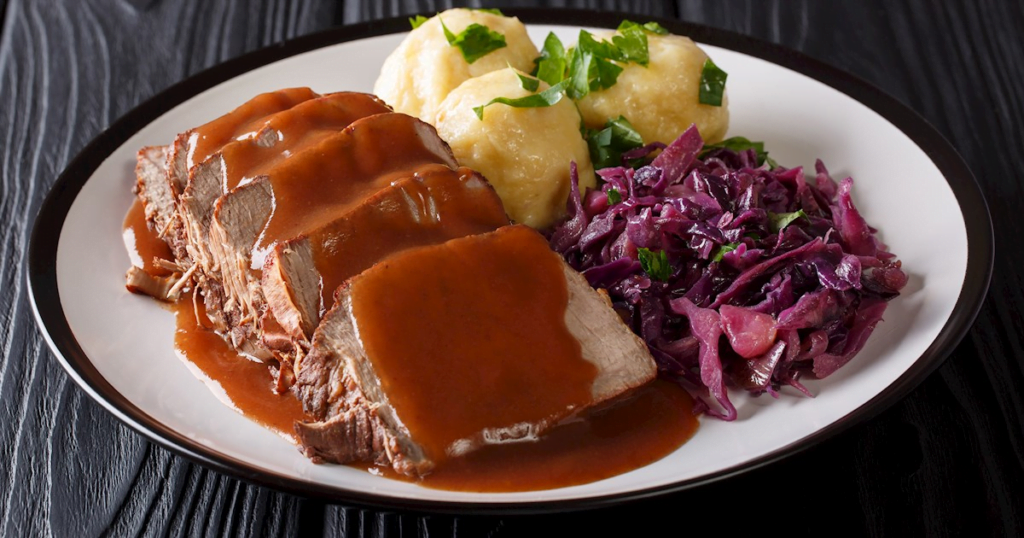
Sauerbraten, a traditional pot roast, is considered the national dish of Germany. The dish is made by marinating beef in a mixture of vinegar, water, and spices for several days before slow-cooking it. It is typically served with red cabbage and potato dumplings, reflecting the rich culinary history of Germany.
Background and History of Sauerbraten:
- Sauerbraten is a classic and beloved German dish, often considered a national dish of Germany.
- The name “Sauerbraten” translates to “sour roast” in German, reflecting the dish’s characteristic sour and tangy flavor.
- Sauerbraten has a long history in German cuisine, with various regional variations.
Ingredients for Homemade Sauerbraten:
For the marinade:
- 1 3-4 pound beef roast (traditionally bottom round or rump roast)
- 1 large onion, chopped
- 1 large carrot, chopped
- 2 celery stalks, chopped
- 3 cloves garlic, minced
- 10-12 black peppercorns
- 10-12 juniper berries (optional)
- 2 bay leaves
- 2 cups red wine vinegar or white wine vinegar
- 2 cups water
- 1 teaspoon salt
For the roast:
- 2 tablespoons vegetable oil
- 2 tablespoons butter
- 1 large onion, sliced
- 2 cups beef broth
- 1-2 tablespoons sugar
- 1-2 gingersnaps or gingerbread cookies (optional, for thickening and flavor)
- Salt and pepper to taste
National Dish Germany – Sauerbraten Recipe
Marinating the Beef
- In a large pot or container, combine all the marinade ingredients: chopped onion, carrot, celery, garlic, peppercorns, juniper berries (if using), bay leaves, vinegar, water, and salt.
- Submerge the beef roast in the marinade and make sure it’s fully covered.
- If needed, add more water or vinegar.
- Cover the container and let the meat marinate in the refrigerator for at least 3-5 days.
- Turn the meat in the marinade daily.
Cooking the Sauerbraten
- Preheat your oven to 350°F (175°C).
- Remove the beef roast from the marinade and pat it dry with paper towels.
- In a large ovenproof pot, heat the vegetable oil and butter over medium-high heat.
- Sear the beef roast on all sides until it’s browned. Remove the roast and set it aside.
- In the same pot, add the sliced onion and cook until it becomes translucent.
- Return the seared roast to the pot.
- Strain the marinade, reserving the liquid, and add it to the pot.
- Add the beef broth, sugar, and gingersnaps (if using) to the pot.
- The sugar and gingersnaps add sweetness and help thicken the sauce.
- Cover the pot with a lid or aluminum foil.
- Place the pot in the preheated oven and braise the roast for about 2.5 to 3 hours or until the meat is tender and can be easily pierced with a fork.
- Remove the pot from the oven and transfer the roast to a cutting board.
- Let it rest for a few minutes.
- Meanwhile, if the sauce is too thin, you can thicken it by mixing some flour with water and adding it to the pot while stirring. Simmer for a few minutes until the sauce thickens.
Serving
- Slice the Sauerbraten and serve it with the sauce.
- Traditionally, it’s served with red cabbage and potato dumplings (Kartoffelklöße).
Sauerbraten is a flavorful and hearty German dish known for its tender, tangy meat and rich, sweet-sour sauce. It’s a favorite in German cuisine and is often enjoyed during special occasions and holidays.
German Cuisine – Schnitzel
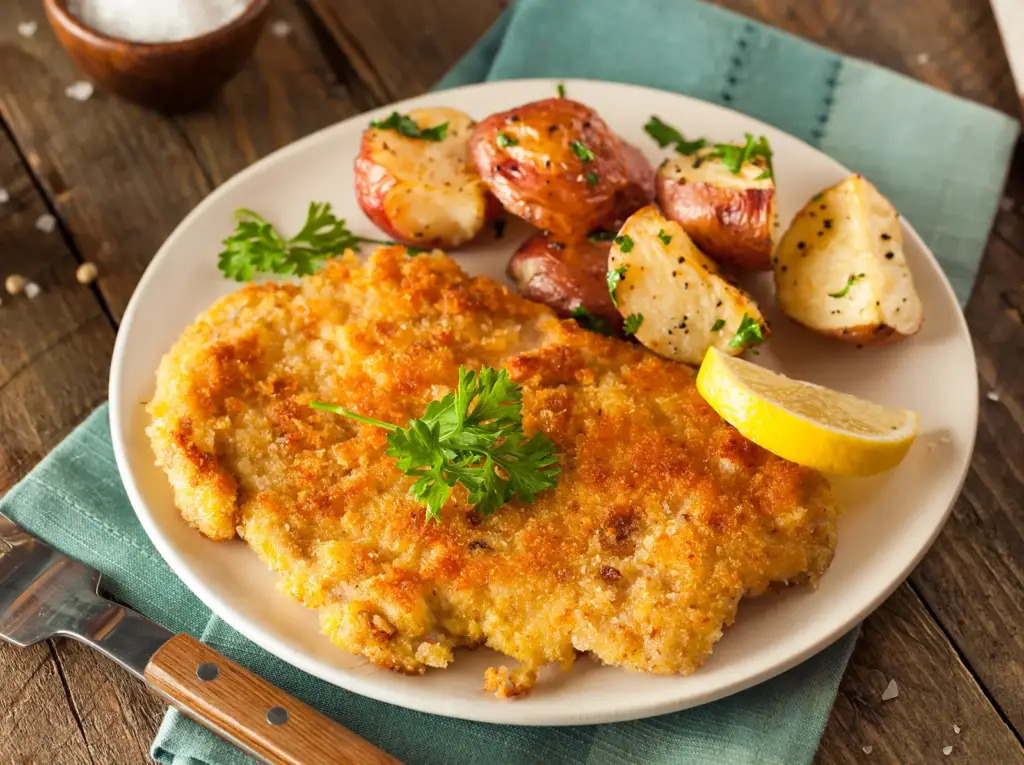
History and Background
Schnitzel, particularly Wiener Schnitzel, is a popular dish in German-speaking countries, though its origins are often associated with Austria. The term “Wiener Schnitzel” itself means “Viennese cutlet” and the dish has been a staple in Austrian and Southern German cuisine for centuries.
Traditionally, it is made with veal, but variations with pork (known as “Schnitzel Wiener Art”) are also widespread in Germany due to pork being more readily available and less expensive.
Ingredients for Pork Schnitzel:
- 4 boneless pork chops, tenderized to 1/4 inch thickness
- Salt and pepper to taste
- 1 cup all-purpose flour for dredging
- 2 large eggs, beaten
- 2 tablespoons milk
- 2 cups breadcrumbs, ideally Panko for extra crispiness
- Vegetable oil for frying
Basic Recipe for Pork Schnitzel:
Prepare the Meat
- Season the pork chops with salt and pepper on both sides.
- Tenderize the chops until they are about 1/4 inch thick.
Dredging Station
- Set up three shallow dishes.
- In the first, place the flour.
- In the second, whisk together the eggs and milk.
- In the third, spread out the breadcrumbs.
Coat the Pork
- Dredge each pork chop in flour, shaking off the excess.
- Dip into the egg mixture, then press into the breadcrumbs until well coated on both sides.
Fry the Schnitzel
- Heat a generous amount of vegetable oil in a large frying pan over medium-high heat.
- Fry the schnitzels in batches, without crowding the pan, until golden brown on both sides, about 3-4 minutes per side.
Drain and Serve
- Remove the schnitzels from the pan and drain on paper towels.
- Serve hot with lemon wedges, and traditionally with potato salad or fries.
Please note that this is a basic recipe and variations may include different types of bread crumbs, the addition of spices to the flour, or serving with different sides like a warm potato salad or cucumber salad.
German Cuisine – Bratwurst
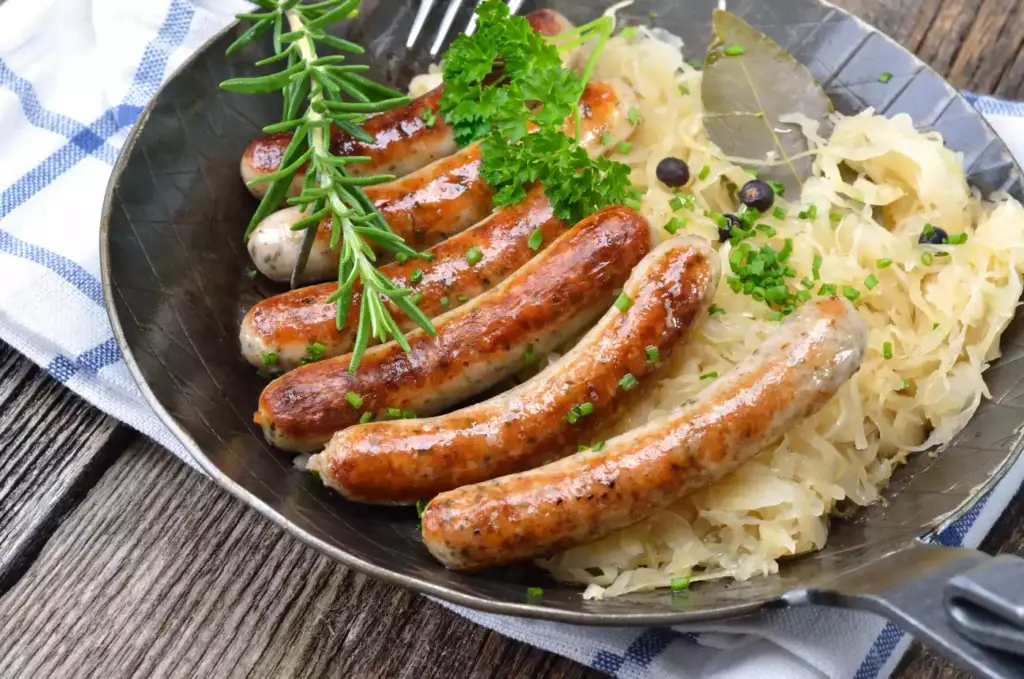
History and Background
Bratwurst is a type of German sausage made from pork, beef, or veal. The name is derived from the Old High German Brätwurst, from brät-, which is finely chopped meat, and Wurst, or sausage. T
hough it is considered a traditional German sausage, the origins of Bratwurst are believed to date back to the year 1313 in the city of Nuremberg, which is still famous for its Bratwurst today.
Variations of Bratwurst are found across the regions of Germany, each with its own unique blend of spices and serving traditions.
Ingredients for Homemade Bratwurst:
- 2 pounds ground pork (or a mix of pork and veal or beef)
- 1/2 cup ice-cold milk or water
- 1/4 cup finely minced onion
- 2 teaspoons salt
- 1 teaspoon white pepper
- 1 teaspoon sugar
- 1/2 teaspoon marjoram
- 1/4 teaspoon ground allspice
- 1/4 teaspoon ground nutmeg
- Natural sausage casings, rinsed and soaked
Basic Recipe for Homemade Bratwurst:
Mix the Ingredients
- In a large bowl, combine the ground meat with the milk or water, minced onion, salt, white pepper, sugar, marjoram, allspice, and nutmeg.
- Mix thoroughly until the mixture is very smooth and pale.
Prepare the Casings
- Slide the sausage casings onto the nozzle of a sausage stuffer.
- Make sure the casings are not twisted and that they are properly secured.
Stuff the Sausages
- Feed the meat mixture into the stuffer and fill the casings, being careful not to overfill.
- Twist the sausages into 6-inch links.
Cook the Bratwurst
- Bratwurst can be grilled, pan-fried, or boiled.
- For grilling, cook them over medium heat for about 20 minutes, turning frequently. For pan-frying, cook in a skillet over medium heat with a little oil.
- For boiling, simmer in water or beer for about 20 minutes.
Serve
- Serve the Bratwurst hot with mustard and sauerkraut or with a roll and German potato salad.
Please note that this is a basic recipe and variations may include different types of meat, the addition of garlic, or other spices according to regional preferences.
German Cuisine – Kartoffelpuffer

History and Background
Kartoffelpuffer, also known as Reibekuchen, are German potato pancakes that are especially popular in the Rhineland. These savory pancakes have been a staple in German cuisine for centuries, often enjoyed as a warm, comforting food during the cold months.
They are traditionally served with apple sauce or sour cream on the side and can be found at various festivals and outdoor markets.
Ingredients for Kartoffelpuffer:
- 4 large potatoes, peeled
- 1 small onion, finely grated
- 2 eggs
- 1/4 cup all-purpose flour
- Salt and pepper to taste
- Nutmeg (optional, for added flavor)
- Vegetable oil for frying
Basic Recipe for Kartoffelpuffer:
Grate the Potatoes
Grate the potatoes and onion into a large bowl. Using a clean cloth or cheesecloth, squeeze out as much liquid as possible from the grated potatoes and onion.
Make the Batter
Return the dry potato and onion mixture to the bowl. Add the eggs, flour, salt, pepper, and a pinch of nutmeg if desired. Mix until well combined.
Heat the Oil
In a large frying pan, heat a good amount of vegetable oil over medium-high heat.
Form and Fry the Pancakes
Spoon portions of the potato mixture into the pan, flattening them into pancakes with a spatula. Fry until the edges are crispy and golden brown, then flip and cook the other side.
Drain and Serve
Remove the Kartoffelpuffer from the pan and drain on paper towels. Serve hot with apple sauce, sour cream, or your choice of accompaniment.
Please note that this is a basic recipe and variations may include the addition of garlic, herbs, or serving with smoked salmon or caviar for a more luxurious twist.
German Cuisine – Käsespätzle
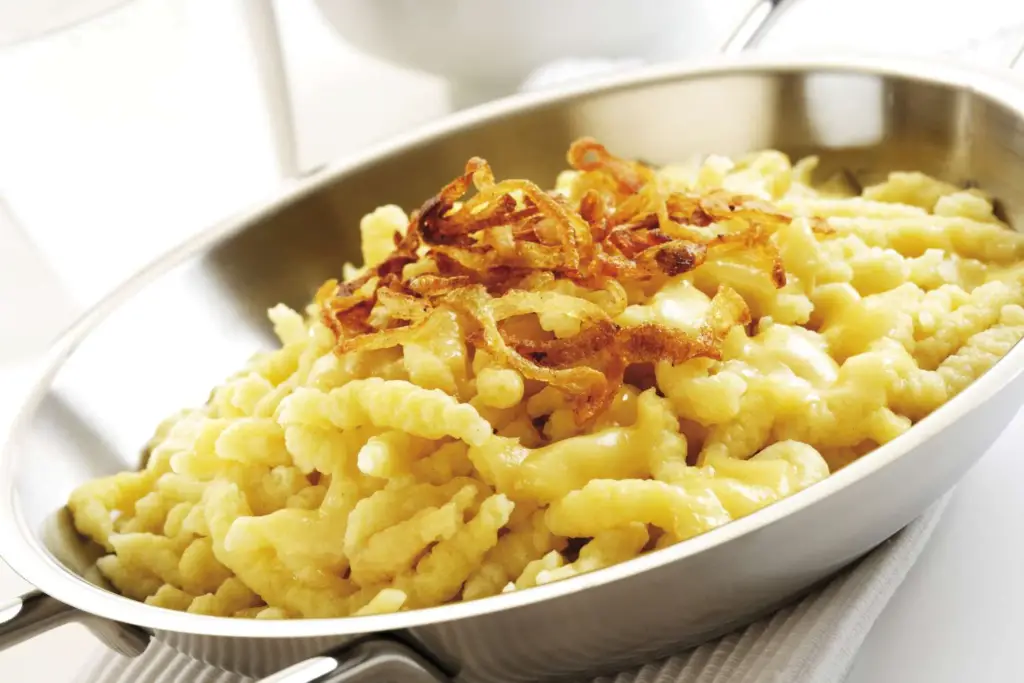
History and Background
Käsespätzle is a traditional dish from the Swabian region of Germany. It’s a comfort food that combines Spätzle, which are soft egg noodles, with cheese and often topped with crispy fried onions.
The dish is akin to what macaroni and cheese is to American cuisine. It’s a staple in the southern parts of Germany, particularly in Bavaria and Baden-Württemberg, and reflects the region’s emphasis on hearty, warming dishes that are both filling and flavorful.
Ingredients for Käsespätzle:
- 2 cups all-purpose flour
- 4 eggs
- 1/3 cup milk
- Salt to taste
- 2 cups grated Emmentaler or Gruyère cheese
- 1 large onion, thinly sliced
- 2 tablespoons butter
- Freshly ground black pepper
- Chopped parsley for garnish (optional)
Basic Recipe for Käsespätzle:
Make the Spätzle Dough
In a large bowl, mix together the flour, eggs, milk, and a pinch of salt to form a smooth, thick batter.
Boil the Spätzle
Bring a large pot of salted water to a boil. Using a Spätzle maker or a colander with large holes, press the batter through into the boiling water.
Cook the Spätzle until they float to the surface, then remove them with a slotted spoon and drain.
Fry the Onions
In a pan, melt the butter over medium heat and fry the onions until they are golden brown and crispy.
Set aside.
Layer the Dish
In a baking dish, layer the Spätzle with the grated cheese, starting and ending with a layer of Spätzle.
Bake the Käsespätzle
Bake in a preheated oven at 375°F (190°C) until the cheese is melted and bubbly, about 20 minutes.
Serve
Top the Käsespätzle with the fried onions, a sprinkle of black pepper, and chopped parsley if desired.
Please note that this is a basic recipe and variations may include adding herbs to the dough or using different types of cheese according to personal preference.
German Delights – Black Forest Cake
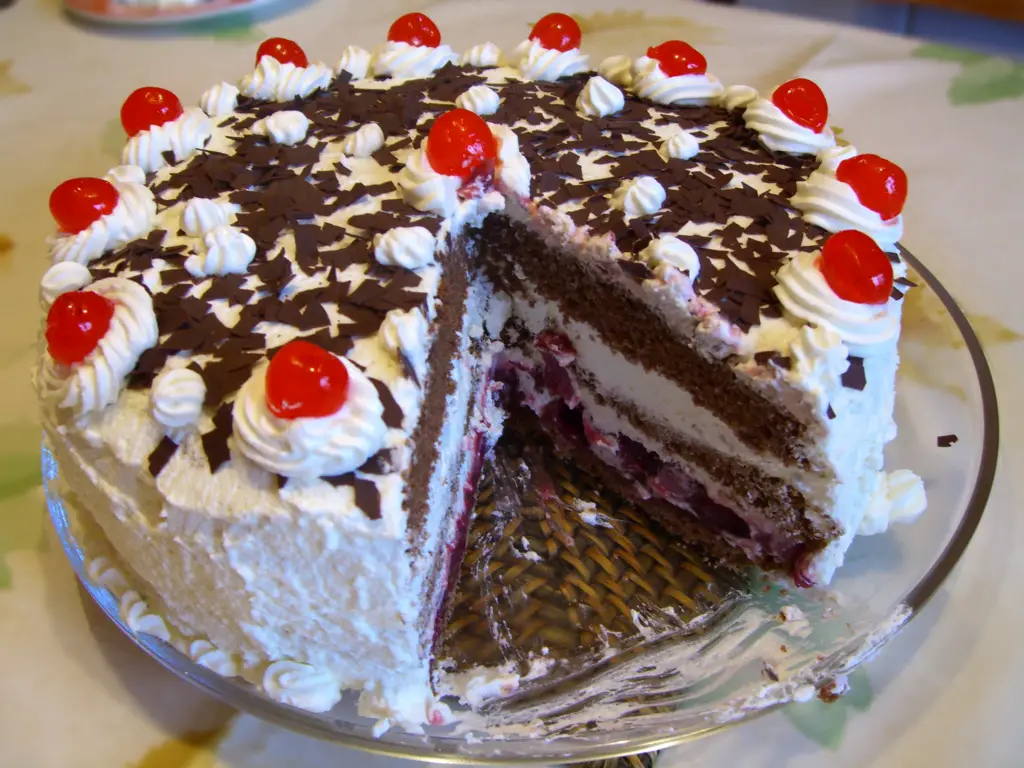
History and Background:
The Black Forest Cake is named after the Schwarzwald (Black Forest) mountain range in southwestern Germany. It’s traditionally made with sour cherries, whipped cream, and Kirschwasser (a clear spirit made from sour cherries).
This cake is a testament to the confectionery skills developed in this region and has become famous worldwide.
German Food – Black Forest Cake Ingredients:
For the Cake
- 2 cups all-purpose flour
- 2 cups sugar
- 3/4 cup unsweetened cocoa powder
- 1 1/2 teaspoons baking powder
- 1 1/2 teaspoons baking soda
- 1 teaspoon salt
- 2 large eggs
- 1 cup milk
- 1/2 cup vegetable oil
- 2 teaspoons vanilla extract
Cherry Topping
- Reserved juice from cherries (1/2 cup)
- 1 can (14.5 oz) cherries, drained
- 1/2 cup sugar
- 2 tablespoons cornstarch
- 1 teaspoon vanilla extract
Whipped Cream Frosting
- 3 cups whipping cream
- 1/3 cup confectioners’ sugar
German Food – Black Forest Cake Recipe Instructions:
Prepare the Cake Layers
- Preheat the oven to 350°F (175°C).
- Grease and flour two 9-inch round cake pans and line the bottoms with parchment paper.
- Whisk together flour, sugar, cocoa, baking powder, baking soda, and salt in a large bowl.
- Add eggs, milk, oil, and vanilla; beat until combined.
- Pour the batter into the prepared pans and bake for about 35 minutes.
- Let the layers cool in the pans for 10 minutes, then invert onto racks to cool completely.
Make the Cherry Topping
- Combine reserved cherry juice, cherries, sugar, and cornstarch in a saucepan.
- Cook over low heat until thickened, then stir in vanilla.
- Let it cool at room temperature, then chill in the refrigerator.
Whip the Cream
- Beat whipping cream and confectioners’ sugar in a chilled bowl until stiff peaks form.
Assemble the Cake
- Split each cake layer in half horizontally.
- Tear one layer into crumbs and set aside.
- Brush off any loose crumbs from the layers.
- Reserve 1 1/2 cups of frosting for piping decorations.
- Place one cake layer on a plate, spread with frosting, and top with cherry topping.
- Repeat with the second layer, add the third layer, and frost the sides of the cake.
- Pat reserved cake crumbs onto the sides of the cake.
- Pipe reserved frosting around the top and bottom edges of the cake.
- Spoon remaining cherry topping on top of the cake.
Chill and Serve
Enjoy the rich flavors of this traditional German dessert, which perfectly balances the sweetness of the chocolate with the tartness of the cherries.
Conclusion
We hope this article has inspired you to explore the delectable delights of German cuisine. From the iconic sausages and sauerkraut to the comforting potato dishes and delectable desserts, German cooking has something for everyone.
Remember, German gastronomy goes beyond the flavors on the plate. It’s about sharing meals with loved ones, celebrating traditions, and embracing culinary diversity. So why not bring the taste of Germany into your own kitchen and experience the culture firsthand?
Don’t be afraid to experiment with new dishes and ingredients and share your culinary creations with others. After all, food brings people together, and what better way to do so than with the rich and hearty flavors of German cuisine?
FAQ’s
What is the German National Food?
German national food includes various dishes, but one popular option is sauerkraut and bratwurst. Sauerkraut is fermented cabbage while bratwurst is a type of sausage made from pork.
This classic combination is often served with potatoes and mustard. It represents the rich culinary traditions of Germany.
What are some traditional German dishes?
Some traditional German dishes include bratwurst, sauerkraut, schnitzel, pretzels, and Black Forest cake.
Are German recipes difficult to make?
While some German recipes may require a bit of time and effort, many are quite accessible for home cooks of all skill levels. Start with simpler dishes and gradually work your way up to more complex recipes.
Can I make German dishes with easily available ingredients?
Yes, many traditional German dishes can be made using common ingredients that are readily available in most grocery stores. However, there may be some specialty ingredients that could require a visit to a German food market or specialty store.
Are there vegetarian or vegan options in German cuisine?
Yes, German cuisine offers a variety of vegetarian and vegan options. Some popular vegetarian dishes include kartoffelpuffer (potato pancakes), käsespätzle (cheese noodles), and sauerkraut salad. There are also vegan versions of traditional dishes available.
How can I learn more about German culinary traditions?
Aside from trying out recipes at home, you can explore German culinary traditions by visiting German restaurants, attending food festivals, or even taking cooking classes. Additionally, there are numerous online resources and cookbooks dedicated to German cuisine.
